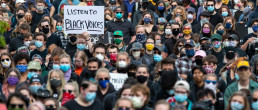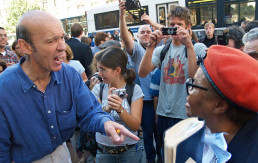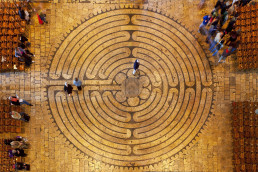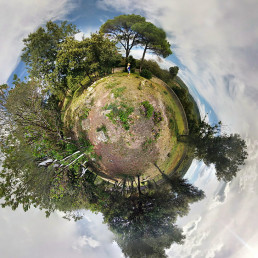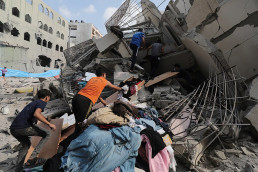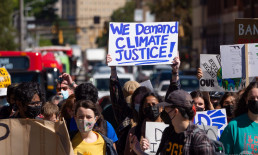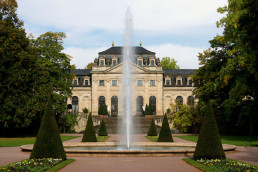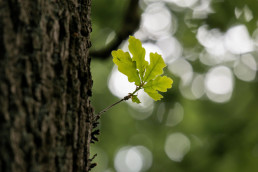Wall Street to Main Street to World Street
Wall Street to Main Street to World Street
The doomsayers work by extrapolation; they take a trend and extend it, forgetting that the doom factor, sooner or later, generates a coping mechanism. You cannot extrapolate any series in which the human element intrudes. History, that is, the human narrative never follows, and will always fool the scientific curve. -Barbara Tuchman
Some say the economic apocalypse is upon us.
The Covid-19 global pandemic that escalated in March, was followed in June by mass protests, massive unemployment, thousands of businesses bankrupt or closing permanently, long lines at food banks, over 100,000 deaths in the United States alone, healthcare workers pushed to the brink by the virus, contradictory state and federal leadership, escalating tensions with China, and deteriorating relations with Russia over election meddling. Amid these chaotic events, the US Presidential Election is coming up this November.
It is as disheartening as it is chilling to see this misery. – is America falling apart?
Disasters have turned into financial panics before, often when leaders lose their way. Yet, when viewed in a larger context, we see that extreme situations do not last. No trend is endless. It helps me to remember the words of Abraham Lincoln, ‘This too shall pass.’ Leaving us, of course, to make sense of the new landscape.
A literary work that symbolizes the current situation for me is Lewis Carroll’s, Alice in Wonderland, written in 1865. Alice falls through a rabbit hole into a subterranean world. There, Alice worries about what final size she will end up being, engaging in a quest for identity and growth, and pondering the logic of rules, the games people play, authority, time, and deal-making.
We are on a similar quest to understand our global economy, and the unsettling disconnects between Wall Street, Main Street, and what I call World Street.
WALL STREET
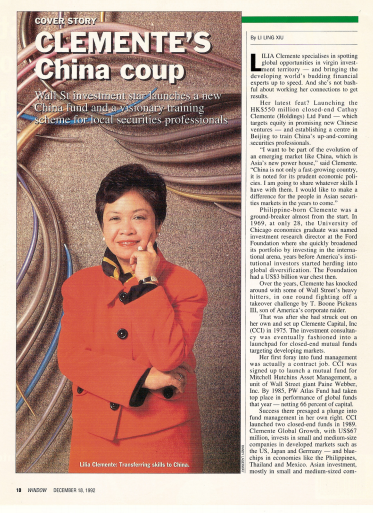
Growing Up in Manila, the only ‘bears’ I saw were in pictures. And a bull to me was the Philippine water buffalo called carabao. I didn’t know a bull and bear could mean anything else in the investment world of the 1960’s when the market was riding high.
The 60’s were the ‘go-go’ years of super-performing money managers, youth revolution, the conglomerates, creative accounting, new issue stocks, and the growing power of institutional investors and traders. America’s economic might made it the leader the West. Then, in December 1968 the Dow Jones fell 36%.
Right around that time, I was appointed director of investment research and assistant treasurer at the Ford Foundation, the first woman and youngest officer in the Foundation’s history. For the next seven years, I served as manager of the Foundation’s research staff and spurred the globalization of its $3 billion portfolio by investing $150 million into the Japanese market, as well as other foreign markets.
Ever since the 1970’s, Wall Street and financial services around the world have been characterized by a sharp intensification of competition and a rapid transformation of markets. The end of the Cold War and the spread of globalization which started in the 1980’s and the rise of China as an emerging superpower all happened within just 33 years. But the globalization boom, like the stock market boom and economic boom, was also followed by a bust.
Twelve years ago, in the years 2008-2009, when the worst financial and economic crisis gripped the global economy, the world was in a state of shock and made the case for urgent reforms. But instead, the markets had a powerful bull market rally for 11 years which just ended in March 2020 after the pandemic crisis hit the US and the market lost a third of its value.
Since its gut-wrenching selloff in March, the market has rocketed and recovered more than half its losses with its ‘V-shaped’ recovery as of this writing. This rosy view from Wall Street should make us uneasy since it is a world away from life on Main Street with the highest unemployment in 80 years, the risk of a second wave of infections looming, and civil unrest.
Wall Street’s stock market is not the economy of Main Street and while Wall Street and the financial system is an essential part of any market economy, it is a complex and fragile network of trust. The lesson of the current financial crisis is that such networks are prone to abuse and then to collapse. So, now what?
The late John Templeton, who achieved a remarkable investor’s record said that if you begin with prayer, you can think more clearly and make fewer stupid mistakes.
Some might scoff at such a sentiment, but the challenges of the coming decades make the case not only for urgent reform, but for a more conscious, even ‘spiritualized’ financial system. The principle of caveat emptor – ‘let the buyer beware’ does not work anymore. People need protection from predatory practices and renewed trust in corporate governance. Regulators need to watch the buildup of leverage. And companies need to be accountable once again. Capitalism has always evolved and is capable of doing so now. The test will be determined by what we value and how we act.
Here is a table on the global investment landscape that notes key trends and themes from 1945 to a future timeline ending 2025. These changes are leading to the emergence of more dynamic markets, quite distinct from previous decades.
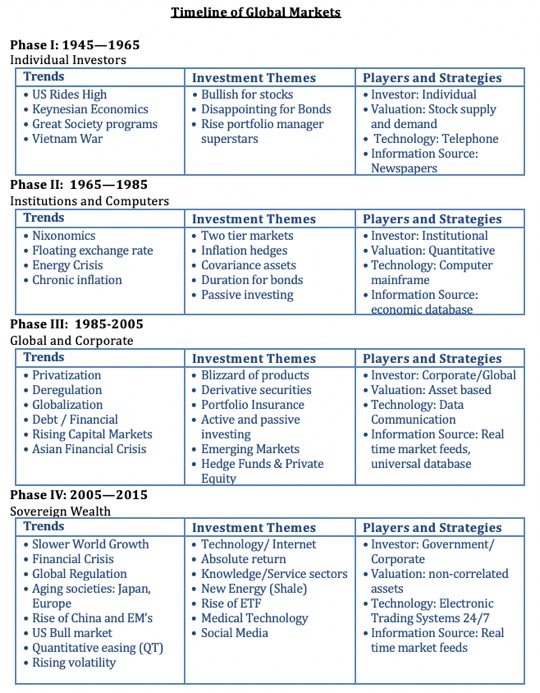
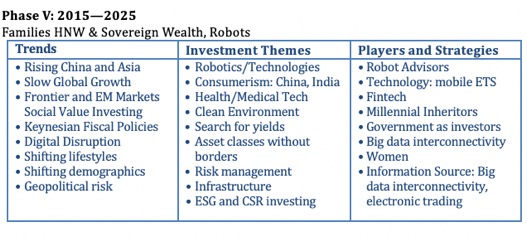 Source | Clemente Advisors, LLC and ETF Asia Analytics Inc., June 2020
Source | Clemente Advisors, LLC and ETF Asia Analytics Inc., June 2020
So where do we go now, Wall Street?
Given the trends and investment themes in the Phase V Timeline, from 2020 to 2025, meaningful growth and progress will require new ways of thinking. Corporate growth and strong Wall Street markets have been engines of progress, yet the same engines have created or contributed to the biggest obstacles we face today – income disparity and environmental degradation. It is past time for Wall Street businesses to look beyond quarterly profits and act in the interests of society.
Imagine investing in job training for the underserved, or conserving key forests and other habitats for future generations, or in bioregional enterprises that are regenerative. These are examples of social impact investing today. New investment structures and partnerships with nonprofit organizations, government agencies and Small Business Administrations (SBAs) are offering creative opportunities at all scales, local to global.
We are in the midst of a demographic shift in the US and globally. Millennials born in 1981-1997 are the largest living generation in US history, alongside Baby Boomers reaching retirement. Millennials will account for 75% of the labor force by 2025 and will hold about $68 trillion in wealth by 2030 as a result of intergenerational wealth transfers, or inheritance. US Millennials are on the verge of becoming big players in the global investment landscape. They identify as global citizens, as they consume, borrow, invest, save, and unleash funding for social and environmental causes. Millennial investing will drive change and present numerous opportunities for companies, industries and financial services.
Slower growth and the rise of emerging and frontier Asian markets, deep investment in solar and regenerative technologies, and the empowerment of women and millennial inheritors all spell hope for a future economic landscape that is more cooperative and collaborative, focused on people, planet and purpose rather than profit alone.
MAIN STREET
Social distancing and national lockdowns, travel bans and halted tourism, business and school closures, volatile markets – recent circumstances defy comparison to crises of the past. Made more complex by its speed and global scale, this pandemic is unlike anything we have witnessed in our lifetimes.
All countries face the threat of a global healthcare crisis, economic recession, and financial meltdown. And decisions made now can be life or death ones. As long as the rate of COVID diagnosis continues to increase, business will be impaired, markets will be volatile and forecasting hazardous. Much of our hope lies in the medical profession with scientists and drug companies racing to find vaccines and anti-viral treatments.
How bad is it? In the midst of a downturn on Main Street, describing severity is a real challenge – things are changing so fast that the traditional data and economic metrics cannot keep up. What are the real numbers on poverty and inequality? And what is happening to America’s shrinking middle class?
The US government has passed several relief packages to address the effects of the coronavirus, spending about $3 trillion, (more than 10% of the real GDP) on loans and grants for businesses to maintain payrolls and rent payments, as well as to prop up severely depressed industries like airlines. The US Federal Reserve also injected 2.3 trillion of liquidity into the monetary system to help keep order and support financial conditions. But are these the best tools at hand? Is the relief even going to the right places? This is where moral leadership is required.
The missing link in this free market fundamentalism is the recognition, central to capitalism that business has greater responsibility than bottom-line profits. Adam Smith, a founder of modern capitalism, understood that economic freedom can’t flourish without a strong moral foundation. Yet, we see examples of capitalism without a conscience everywhere -environmental pollution, unfair hiring and working conditions, sale of dangerous products, and so on.
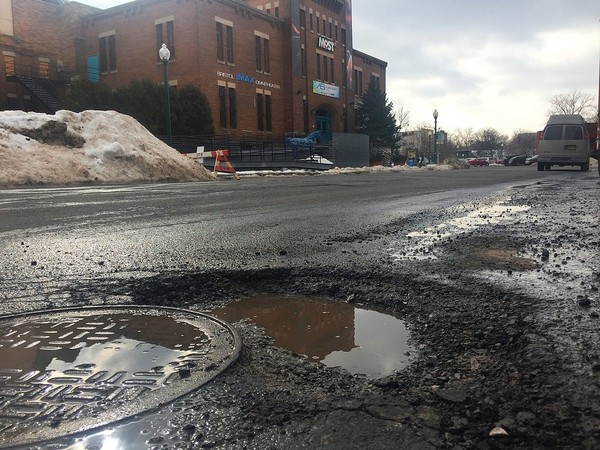
And what about our extensive and dilapidated infrastructure in the US? Take a ride on our pothole-filled roads and decaying bridges and tunnels built during Roosevelt’s New Deal. The late Felix Rohatyn’s book, Bold Endeavors; How our Government Built America and Why It Must Rebuild sums it up; The aging of our nation’s infrastructure has lessened our productivity, undermined our ability to compete in the global economy, shaken our perceptions about our own health and safety, and damaged the quality of American life. And then there is the state of our children’s education. Historically, education has been a great equalizer but we’ve slipped further and further behind in the global ranking.
Yes, times are hard with this 2020 recession and contrary to what pundits say, fixing up Main Street’s economy will take time and won’t look like the sharp recovery shapes of V, L, U. What are we going to do about it? We cannot just rely on government to fix things.
We need to begin in the places where we live. What do we want the ‘new normal’ to look like? Look around. What is the condition of our local and bioregional food and water system? How do we currently meet our needs as a community? Is there economic opportunity for everyone and help for those most at-risk? Are local businesses, schools, and organizations supported? Are parks, waterways and wildlife protected? This is where we need to invest time and creativity, as well as social, spiritual, and financial capital.
When viewed in a more local context, many of our problems are manageable. As we shift from ‘me’ to ‘we’, people-powered movements are gaining momentum around the world. When we begin to invest in these efforts across time and space, the opportunities to build a new kind of capitalism is unlimited. The time to start is now.
WORLD STREET
Today’s global economy is genuinely borderless. Information, capital and innovation flow from all over the world, enabled by technology. The torrential cross-border flow of capital is breaking down barriers across cultures, minds and yes, hearts. Time and distance continually shrink, compelling people to explore their differences.
Several sets of processes co-exist – localizing, regionalizing, internationalizing, globalizing. We live in a world of increasing interconnectedness as well as volatility; a world in which the lives and livelihoods of every one of us are bound up with processes operating at larger geographical scales.
Such a system has to be built on a world trading system that is equitable and must involve major reform of such institutions such as the World Trade Organization (WTO), World Bank, and International Monetary Fund (IMF). Trade is one of the most effective ways to enhance wellbeing, when it is conducted fairly, and when poorer countries are allowed to open up their markets in a manner appropriate to their needs and condition. The major challenge is to meet the material needs of the global community as a whole, in ways that reduce, rather than increase inequality and to do so while protecting and regenerating ecosystems. That is, of course, easier said than done since it requires the cooperation of multiple participants – businesses, nations and international civil society in establishing mechanisms to capture gains of globalization for the majority and not just for the powerful few.
Although difficult, such policies are not impossible if the social and political will is there. The imperatives are both practical and moral.
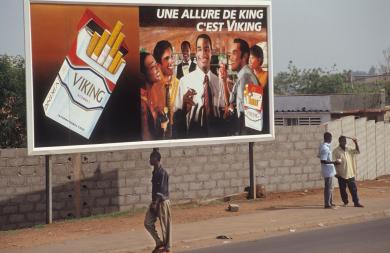
But when the poorest people are fed a steady diet of media glorifying immense wealth and fame it does no good to support social and political stability. It is utterly repellent to me that so many live in deprivation while others live in luxury. We need the will to express what we value, create the narratives that reinforce those values, and live them.
International financial flows and foreign currency transactions have reached unprecedented levels. They easily dwarf the value of international trade and manufactured goods and other services and have done so at an increasing rate over the past three decades. Today in the context of globalization, the tension has become especially acute as nations see traditional control of their monetary affairs threatened by external market forces. The periodic financial crises that have engulfed some or all parts of the world economy serve to intensify these tensions and create legitimate fears over the accountability and responsibility of financial institutions.
The global integration of financial markets brings many benefits to participants in terms of accuracy of information flows and speed of transactions across the world in different time zones. But such global integration and instantaneous trading also has its costs. We experience ‘shocks’ which occur in one geographical market and spread instantaneously around the world, creating the potential for global financial instability. Financial ‘contagion’ is endemic in the structure and operation of the contemporary global financial system. Although many of the restrictions still exist, the regulatory walls have been crumbling, even collapsing altogether in some cases.
CONCLUSIONS
My field, global investing provides me with a window on the world that gives me connections between people and events, between reason and intuition, between the past, present and the future. And being a Filipino-American with multi-cultural heritage provides me with the eyes to see such connections globally.
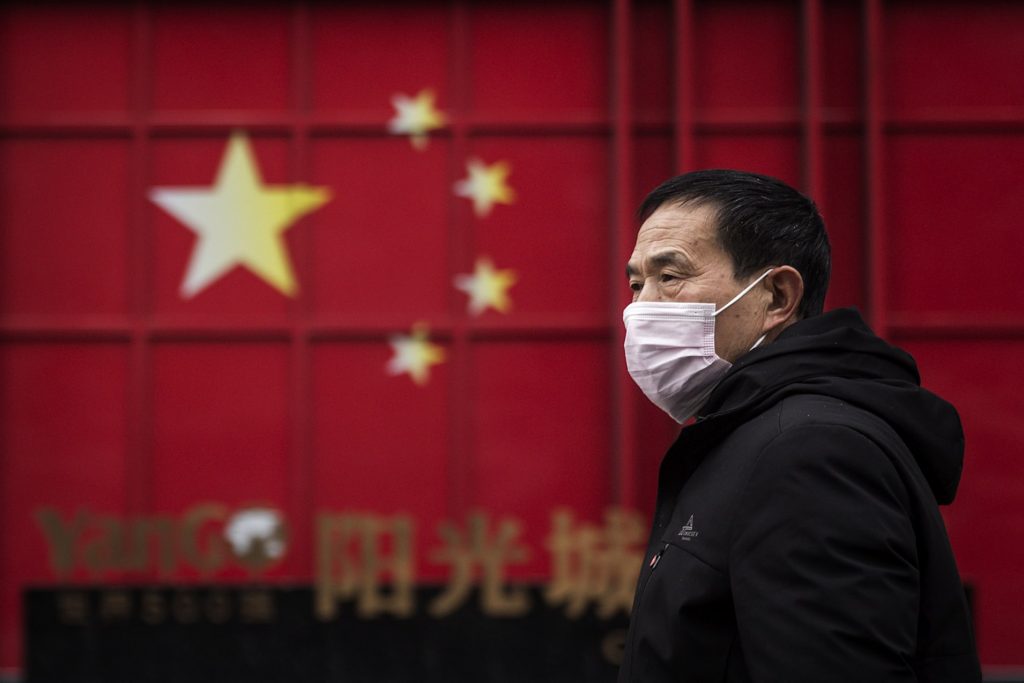 Recently, the character and tempo for globalization has changed. Even before the pandemic crisis of 2020, globalization was in trouble. When did the slowdown begin? The open system of trade that had dominated the world economy for decades was damaged by the financial crash of 2008 and the China-American trade war. The pandemic shock now ripping through business is daunting, with countries accounting for over 50% of the world GDP in national lockdown.
Recently, the character and tempo for globalization has changed. Even before the pandemic crisis of 2020, globalization was in trouble. When did the slowdown begin? The open system of trade that had dominated the world economy for decades was damaged by the financial crash of 2008 and the China-American trade war. The pandemic shock now ripping through business is daunting, with countries accounting for over 50% of the world GDP in national lockdown.
Yet, Wall Street analysts expect only a slight dip in profits in 2020, given the fact that few public listed firms have made public their calculations on the damage caused by the lockdown. Don’t be fooled by this. In this downturn, falls of over 50% will be common with empty streets and factory shutdowns. Trade is suffering from disrupted global supply chains as well as the flow of capital, as long-term capital sinks. And by attempting to pay off new debts by taxing firms and investors, some countries may be tempted to restrict flow of capital across borders. Global firms may be less profitable.
As economies re-open, please don’t expect a quick return to a carefree world of free trade. Movement of people and goods face restrictions in travel and immigration, which will affect the ability to find work. Like all crises, the Covid-19 calamity will pass and hopefully needed changes will be made. History usually does not evolve in an orderly way. It often leaps forward in disorderly jumps. We are having a crash course in digital currencies, e-commerce and isolated work from home.
In an increasingly complex society, old ways are no longer guaranteed to work. Values are the emotional rules by which a nation governs itself. Values summarize the accumulated wisdom by which a society organizes and disciplines itself. Our values and goals are the precious reminders that individuals obey to bring order and meaning into their personal lives.
The wakeup call in this current pandemic is the movement toward commitment to shared values and goals.
What should these goals be? Nationally, there must be a demand for public service, to see society protected and social injustices addressed. There should be encouragement to blow the whistle on wrongdoing. Individually we must develop compassion, willingness to work, loyalty and love of family and friends and commitment to communities and organizations, as well as the courage to face temporary defeat. Treat all people with justice. Look after your own health and that of others. And we’ve got to keep reviewing and updating our value decisions regularly.
Today’s economic crisis is smaller than that of 1930’s—so far. Yet it is a major event in our lifetimes, with resulting shifts in geopolitical economic power. Whether this brings forth ‘urgent reforms’ in the near term remains unclear. But transformation to a more conscious, collaborative economic future is possible if we have the will to seize it. The new decade is here and it will never, ever be business-as-usual again.
Remember the words of Rabindranath Tagore, “Let me not pray to be sheltered from dangers but to be fearless in facing them.”

About Lilia C. Clemente
Lilia has over 40 years experience as a distinguished investment manager, global investment strategist and entrepreneur. She is the Founder and Chairman of Clemente Capital and is considered one of the pioneers of emerging markets investments. She is founding member and former trustee, Chief Investment Officer of Women’s World Banking. Lilia is passionate about social value investing, women’s empowerment, millennial inheritors, children’s education, environmental issues and the struggle of immigrants throughout the world. (photo courtesy Fortman Cline)
Freedom and Energy from Healing White Racism
In the U.S., we are reeling from yet another round of white people killing Black people. Hateful. Horrendous. Heartbreaking. Again. In a recent post on Medium, Corinne Shutack put together a helpful list of 75 things White People Can Do for Racial Justice. As a white man, I am grateful for her effort and care. Most of the items are about white folks educating ourselves and advocating for changes in racist practices, both of which are essential. Friends of color tell me they want primarily two things from white people: to show up for justice and to do our own work with white people at dismantling racism. So to the list I would add “healing” — healing our own personal trauma, and our generational trauma of white on white oppression beginning hundreds of years ago in Europe, that conditioned European colonists to take up oppressive roles toward Indigenous and People of Color early on, and continues to infect most white people today. Racism is not inherent to human beings. An early teacher of mine used to say that white racism is like dog manure on your sneaker. Notice three things, he would say: it’s not an inherent part of the sneaker; it’s very hard to scrape it off from all those tiny crevices on the sole of the sneaker; and everywhere you go, it stinks the place up! What an apt image. Furthermore, race is not biologically real. It is a constructed notion used to separate and hurt us all. The label “White people” was invented in the mid-1600s in colonial America to justify a system of exploitation and domination, and to divide low-income Europeans from low-income Blacks and Indigenous folks. (See the video “Birth of a White Nation.”) In addition to the visible and invisible system of oppression, racism and white supremacy are also held in place significantly by unhealed hurt. A white child, treated with respect, taught compassion and connection, educated with an honest and full version of U.S. history that includes what was done to the Native peoples and enslaved black people, and allowed to feel their feelings as they grow up, would never grow up to willingly participate in or agree to the oppression of anyone. But most white children never get that upbringing since we get born into an oppressive system that pits many groups against each other for the purpose of protecting the wealth and power of the few. So racism and other oppressions keep us fighting among ourselves rather than unifying to transform a corrupt, unjust system based in greed, fear, and insecurity. In my work with white people who are just beginning to understand whiteness, one exercise I developed offers an accessible ramp into this territory. It’s called “Beginning Anew with My White European Ancestors.” In pairs, each person shares about three things: a) What do I love about my European ancestors or heritage? What are the positive contributions my people have made to humankind? (All cultures have contributed good things, and this round helps counteract white guilt and validates positive aspects.) b) How did my European ancestors or white heritage harm people of color? Specifically? What are white people still doing today that is profoundly harmful? What breaks my heart in relation to all of this? (This round often brings up grief and anger.) c) How did I unawarely benefit as a white person from the harm that my ancestors did to Indigenous and Black people, and how may I now be perpetuating the ongoing oppression that exists today? What do I vow to do personally from this point forward to help heal the harm my European ancestors and the current dominant white culture and misinformation have done and are still doing to people of color? What do I vow to do to help change the systems that perpetuate that on-going harm? Try to be specific. (This round asks for personal change.) (Note: There are any number of ways of exploring and healing internalized white racism. For whites who have done a lot of self-work, this exercise may feel too simple. It’s just one starting place.) Each of these rounds can evoke deep feelings. In this work with white people, I’ve discovered that underneath white defensiveness or guilt is usually broken-heartedness. Why? Different reasons. Some whites, as children, had friends of color whom they loved, and from whom they got separated because of racism. Some had a nanny of color whom they loved as much and sometimes more than their parents, and were later separated from. Many young whites saw unjust treatment of people of color but could not stop it because they were too little and powerless. Some white folks carry the inner shame of times they caved in to peer pressure and didn’t speak up against a racist joke or other racial mistreatment. Some white people were raised in such a segregated world that they never had a black or brown friend and therefore feel ignorant and separate. Many white people feel a lack of ease in their relationships with people of color, a discomfort, a fear, maybe a guilt born of the legacy of racism and white supremacy. Many white people know at some deep level, that the privilege we enjoy because of our skin color is inherently unfair and wrong, and is built on generations of brutal exploitation and oppression. Furthermore, in this white supremacist culture, white people have been conditioned to feel dominant, superior, and entitled in relation to people of color, which in turn generate feelings of shame, guilt, fear, and grief, whether recognized or not. Over the years of this work with white people on white racism, I have observed that most white people are aware of the monstrous effects of racism in the world and on some level fear that if they are open to their complicity in racism, that they too will reveal themselves to be at fault. They also sometimes feel defensive since they never intended to be or act in a racist way and don’t want to be accused of being evil when they think they have been innocent bystanders. However, underneath these fearful or defensive reactions, if the conditions are safe enough, what most white people find is a broken heart, a deep well of grief and loss at being separated from people of color in our lives, of feeling betrayed by mis-education, of feeling disillusioned about our country whose ideals of life, liberty, and the pursuit of happiness were not delivered to all people and were built on genocide and slavery, and feeling inadequate to change the conditions. Transforming racism and white supremacy is a long, multi-layered, complex struggle. One necessary piece is healing both our individual and collective suffering from and within racism. For me it’s also been an honor and a relief to recover part of my humanity. Healing happens in many ways. One effective form that I’ve practiced is a co-listening partnership. Each week, for the past 35 years, a friend and I have offered each other 45 minutes of warm, focused, respectful attention. He listens to me for 45 minutes without interruption or advice, then I listen to him for 45 minutes. This allows us to go below the thoughts to the underlying feeling. Tears and feelings of anger, fear, despair, powerlessness, discouragement, or confusion get released. Also feelings of joy, gratitude, love, and excitement about life. This process has allowed me to think more clearly, love more deeply, and act more boldly over the years of releasing old distress. In the safety of these weekly sessions, I have been able to acknowledge and heal much of my own white racism, and understand how I have unconsciously perpetuated harm by assuming and acting within my unearned white privilege. Most social justice activists understandably focus their work on the external structural policies and practices that they think need changing or to be created. While doing this, I think it is crucial to also put attention on healing the inner, personal habits and hurts that limit our humanity and dull our thinking, and keep us divided and acting small. These patterns include our feeling unloved, or disrespected; our conditioning to feel separate; our ignorance, powerlessness, and internalized trauma that prepare us to take our place in the oppressive structures that surround us. The process of healing also includes loving ourselves as inherently valuable and worthwhile human beings, while increasingly coming to love and respect all others. As a young white boy, I was thoroughly saturated with white culture. I was raised with working class parents who struggled to make a living and had alcohol issues, so I was not immune to suffering. But everyone I knew was white, so that’s all I knew. Furthermore, I grew up loving my country, proud of it, and believing in the ideals of liberty, justice, and equality. Then in my teens and early 20s, when I began to learn about the underbelly of US history, I felt betrayed, like I had been lied to, hoodwinked. A deep anger and grief arose in me. I had to re-learn so much, including about whiteness. I came to understand the truth of the anti-apartheid chant used in South Africa: “An injury to one is an injury to all.” I now know in my bones that my liberation is linked to the liberation of everyone. People of color cannot end racism and white supremacy by themselves. Nor should they have to. The active participation of white people is required. In simple terms, I see this as having two major parts that go hand in hand. One is recovering our full humanity from wrong views, miseducation, and hurtful actions around race. This is the inner healing journey. The second part is to unite and act in concert with others around a strategy to challenge and eventually dismantle white supremacy and create the beautiful society we believe is possible. The racial upheaval of the past several weeks is a cry of suffering and a surging call to us white folks to join whole-heartedly in this monumental and heroic human struggle for freedom. Fortunately, many white people are stepping forward in visible ways. One concrete step on this journey would be to find a co-listening partner and continue transforming ourselves from within. As Martin Luther King, Jr said, “All lasting and meaningful change begins on the inside.” John Bell is a Buddhist Dharma Teacher who lives near Boston, MA, USA. He is a founding staff and former vice president of YouthBuild USA, an international non-profit that provides learning, earning, and leadership opportunities to young people from low-income backgrounds. He is an author, lifelong social justice activist, international trainer facilitator, father and grandfather. His blog is www.beginwithin.info and email is jbellminder@gmail.com. Freedom and Energy from Healing White Racism
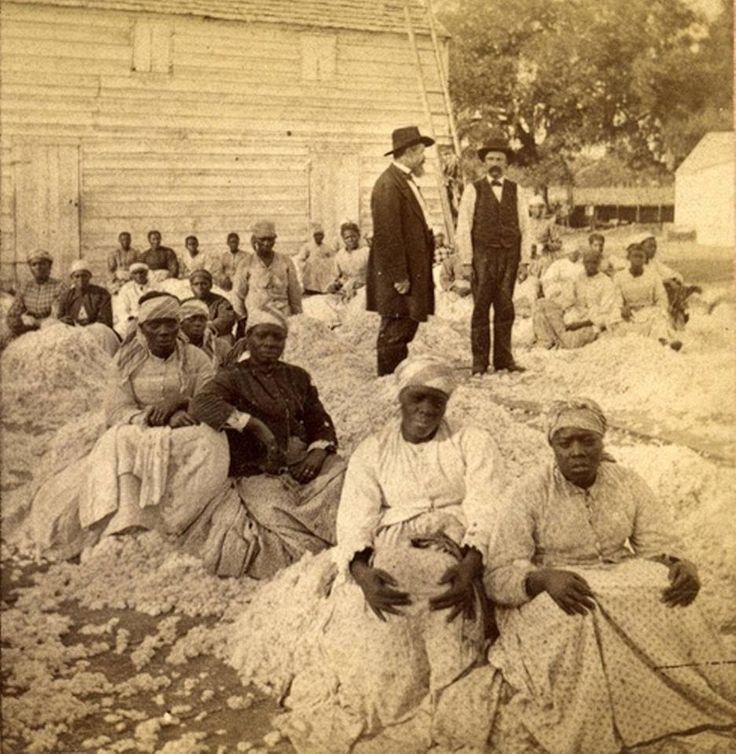
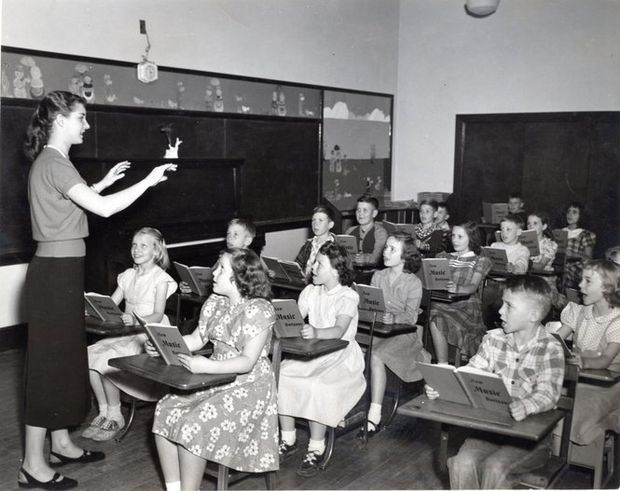
Of course, individual healing is not sufficient to transform the system. We must also stop the harm, gain political power, implement structural and policy changes, and create beautiful new community-building initiatives to address the problems facing humanity. But if we do not also do the healing work, then our rigid and irrational old habits and patterns of oppression will infect the new world we are working so hard to build.
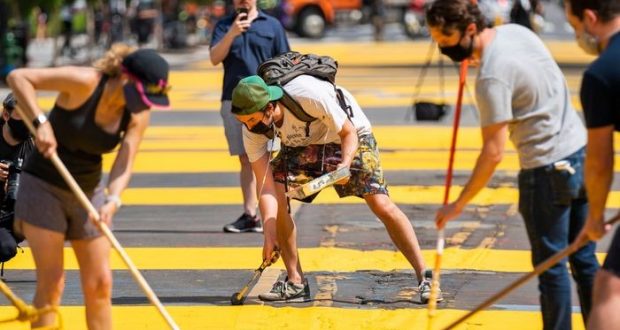
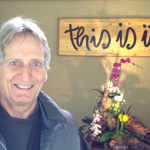
About John Bell
Rebuilding Earth's Forest Corridors
Rebuilding Earth’s Forest Corridors
“Islands are where species go to die.”
When I first heard that David Quammen quote, I thought of Darwin and the Galapagos Islands, and of Australia and other places where evolution had cruelly terminated entire species and developed others along sometimes strange and bizarre paths. It made sense that these effects were all due to extreme isolation.
I had no idea then that I would one day be concerned that we are also creating islands everywhere we develop and contributing to the destruction and mutation of species all around us. As far as nature is concerned, an island need not be a land mass surrounded by water. It can simply be a city block.
Nature tends to live in ribbons—the forest corridor, the mountain range, the coastline, and the winding river. Any ecosystem that is disconnected from similar (or different) ecosystems will eventually die. Any ecosystem separated by a boundary from the ecosystems around it exists as an island, and the effects are the same. England successfully addressed this issue in the mid-twentieth century with greenbelts. Queen Elizabeth I created the first greenbelt around London in 1580. She envisioned a three-mile-wide parkland band around the city to stop the plague from entering London, but it was never fully realized. Modern UK greenbelt policies date to the Town and Country Planning Act of 1947, which allowed local authorities to include greenbelts in town plans. Today about 13% of England’s total land area is designated as greenbelt. The greenbelt was England’s response to rapid urbanization and population growth resulting from industrialization. It is still a very effective antidote to urban sprawl and the industrial erosion of quality of life.
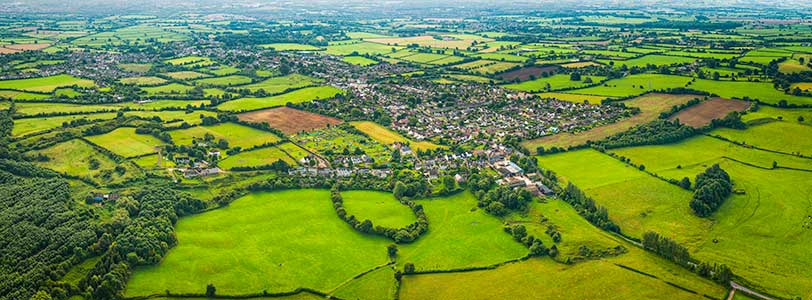
As our world moves toward higher populations everywhere, we would all do well to consider this innovative example of good planning. Even where land seems abundant, as it does in North and South America, we would still be wise to work within natural patterns. For countless generations we designed and built in tune with our Earth. But ever since the industrial revolution, we have become increasingly invested in the “grid” and in the orderly control of natural features. Unfortunately, our block grid systems create islands that defeat the interconnected energies of ecosystems and the biomes they are part of.
In land development, we always speak first of a site or a lot. In our minds, we envision the legal parcel that we are dealing with. It comes with boundaries that are artificial and typically have little or no relationship to the physical qualities of the land, both within and beyond those boundaries. Through our terminology we abstract the idea of the earth, and of the dirt and terrain we are dealing with. If that was as far as it went, it might be all right, because it serves the legal and financial worlds that are so tied in to our development industry.
But we unfortunately take it further.
If we are developing a site, we often reinforce its boundaries with roads, sidewalks, foundation walls, and other physical barriers. The bounded site, regardless of how well it is treed and planted by us, can become an ecological island, and it will trend toward failure over time.
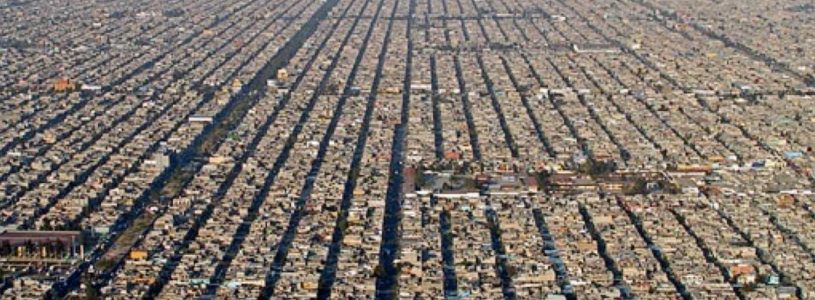
Waterways and Forest Corridors
Let’s look at trees.
We plant them because we love trees; they provide shade, clean and oxygenate the air, filter the sunlight, and rustle in the wind. Many varieties flower in the spring and shower us with blossoms. We all love trees. But we don’t always understand what they really need to thrive. First, they obviously need water. But they also need something else.
Nature depends on all its members for its strength.
A separated tree will often weaken or die because it is not protected from the wind. Most trees will need a connected tree canopy and root system for them to be able to thrive. They also serve as a canopy connector for the myriad members of the insect, bird, and small-mammal worlds that travel across their branches, moving from tree to tree.
Trees not connected to each other at the canopy and root levels can become susceptible to disease and pests. We have to fertilize them. We have to spray them with pesticides. More importantly, when trees are not connected at the canopy and root levels, they do not support a vibrant ecosystem at all, and we are eventually left with barren spaces.
When we break a line of trees so that the canopy and roots cannot touch across a road, or a lane, or even a park, we have crippled the forest as an effective ecosystem and left each tree as a lone survivor that may not thrive, may not propagate, and will fail to support the larger biome as it is designed to do.
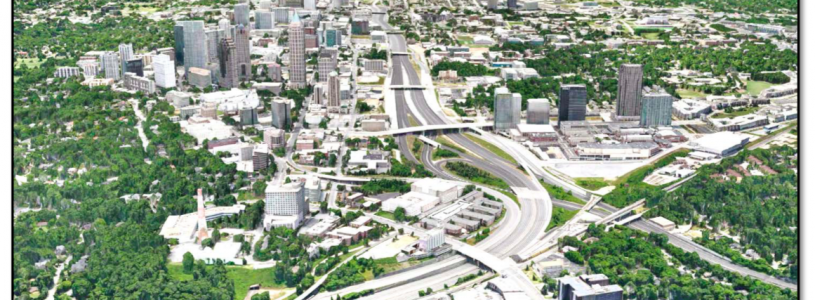
In many cities we are now looking at planting one tree per person, which is a laudable goal. But we must remember to plant the trees where they can begin to re-create the forest corridors we have removed and disrupted.
It can be difficult to visualize where forests grew before the city. Using satellite imagery, we can now trace the outline of previously forested areas. They show as darker areas on the satellite image. If we restore trees along these corridors, they have a much greater chance of thriving. Old forest corridors are always above underground waterways, and they source the subsurface water through their root systems. Ignoring the natural feature of the old forests wastes an opportunity to more easily restore a partial ecosystem, with all the intrinsic benefits its trees bring to us. Furthermore, establishing trees above subsurface water increases their drought resilience.
Too often we think of the city and the country, or the woods, as separate. Good land management respects the intertwined quality of the relationship. I prefer to use the word stewardship when referring to land-management practices, because I think it reflects the intergenerational quality of the effort required. When we speak of the country or the woods near our cities, we now refer to the wildland-urban interface (WUI). Wherever urban development abuts a wildland, we have a WUI. Modern stewardship practices are evolving to restore the health of these wildlands. Proper wildland stewardship, including increasing drought resilience and the regular clearing of brush and dead wood, reduces the risk of uncontrolled wildfires. But until their health is restored, these WUI zones are where we will continue to see wildfires encroaching into urban areas.
Wildfires in the western United States occur nearly four times more often today than they did in the 1980s. They threaten lives, increase local air pollution, and put areas at risk of flash floods when the rains do come.
Satellite-based fire maps of the world show natural seasonal burning patterns like the summer fires in Canadian boreal forests. These images also show unnatural man-made fires like the August–October Amazon rainforest burns and the Africa and Southeast Asia agricultural burning during the dry season. Such burning always results in thick smog over the broader region. The Indonesian fires are so bad that Singaporeans hundreds of kilometers away are often forced to take refuge indoors for weeks until the burning season is over.
Unfortunately, natural burning patterns have been disrupted. When residents don’t allow controlled burns through the forest understory, fuels build every year. Wildfire risks are exacerbated when we disallow proper wildland stewardship practices at urban boundaries. Without proper WUI guidelines in place, and special building codes for these high-hazard areas, the harm will continue. WUI guidelines include reducing fuel by clearing out bush, increasing drought tolerance of wildlands, and building noncombustible construction with good water supply for sprinklering. It is time-consuming and costly to develop and implement WUI guidelines and codes. These WUI guidelines and codes are new to our industry, and we can’t implement them fast enough! Canadian, American, European, and Australian wildfires of recent years have been terrifying and far more costly than preventative measures might have been.
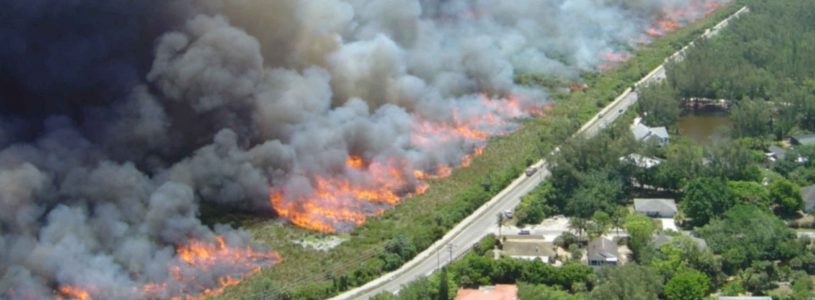
Up close and personal, a firestorm’s real psychological effects on a community are devastating. I was in Edmonton for a board meeting while the 2016 Fort McMurray fires were burning. When I arrived, my hotel was full of children in pajamas and adults with nothing but the clothes on their backs, all forced to flee their homes in the middle of the night. The children had lanyards around their necks identifying them as they ran around the hotel lobby. The parents sat in the restaurant, many without wallets or identification. I gave up my room and stayed at the CEO’s home so one more family would have beds. I flew home sitting next to a thirty-five-year-old woman and her sixty-five-year-old father. They smelled of smoke. They showed me pictures they managed to take of the wildfire as it came down their street. Literally a towering inferno, it destroyed everything in its path, including their home. They were very lucky to escape alive. They planned to stay with family in Vancouver but were in shock, with no idea of how they would ever be able to pick up their lives again.
It was heartbreaking.
The fires we see now are so extreme they are called “mega-fires” and “firestorms” by firefighters, who live in fear of them because they are so often powerless to stop them. A recent study by the University of Leicester determined that wildfires are most likely to occur at the wildland-urban interface when wise forest and wildland stewardship practices are abandoned.
Trees, and the ecosystems and biomes they support, are critical to our survival. Thinking in terms of isolated “sites” and “lots” makes it very difficult for us to rethink things around forest corridors and greenbelts. We must stop trapping trees in isolated “grid-islands,” for their health and our own. We should plant trees in the forest corridors they belong in, connecting their roots and canopies. It is essential that we broaden our understanding of the forest biome and the stewardship it requires, especially at the urban-wildland boundaries.
When properly employed, trees reduce the heating effect of city asphalt. Trees can also reduce rates of respiratory ailments in polluted areas. They shade buildings directly and reduce the energy requirements for cooling. Trees make urban areas more bearable and pleasant, providing visual stimulation and, like the campfire, draw our eyes and calm our mental processes. The roots of trees aerate the soil and fertilize it, creating a subsurface ecosystem.
We need to understand how to protect them.
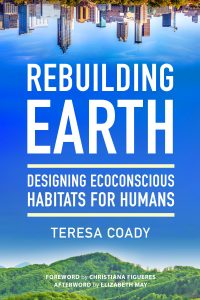 From Rebuilding Earth: Designing Ecoconscious Habitats for Humans by Teresa Coady, published by North Atlantic Books, copyright © 2020 by Teresa Coady. Reprinted by permission of publisher.
From Rebuilding Earth: Designing Ecoconscious Habitats for Humans by Teresa Coady, published by North Atlantic Books, copyright © 2020 by Teresa Coady. Reprinted by permission of publisher.
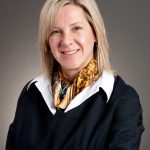
About Teresa Coady
Teresa Coady is an award-winning architect and Fellow of the Royal Architectural Institute of Canada. She received the YWCA Women of Distinction Award in 1999 and the RBC Canadian Women Entrepreneur Award in 2008. She resides with her family in Vancouver.
Civility and its Discontents
For proponents of civility, it is the best of times, it is the worst of times. Political discourse has become so vitriolic that many Americans have simply tuned out in disgust, a trendline that doesn’t bode well for democracy. And every day, it seems, a new civic dialogue initiative springs to life. At the same time, every day brings some fresh new horror—some new act of barbarism that assaults the humanity and safety of immigrants, women, and other marginalized groups of people. The tangible harm caused by such attacks, which are themselves acts of extreme incivility, makes acts of everyday incivility seem trivial by comparison. The topic of civility has become, ironically, a divisive issue among leftists. For its defenders, civility is the foundation of democracy because, without it, hearts and minds harden and become guarded and resistant to change. When politics is a shouting match in which each side lobs harshly worded truth bombs at the other, the participants are likely to dig in their heels while those watching from the sidelines cheer for their team or wince at their mean-spiritedness. Absent civility, we dehumanize our ideological adversaries, and our ability to share a nation with them disintegrates. For its detractors, civility is a standard of decorum enforced by the powerful in order to suppress dissenters and insulate themselves from harsh and inconvenient truths. Powerful people trying to avoid accountability flip the narrative so that they become the innocent victim of the actual victim’s “incivility.” Former South Carolina Governor Nikki Haley made a bad faith call for civility after her attempt to rehabilitate the Confederate Flag was roundly condemned. It is no doubt true that most powerful people would rather have a polite conversation—or none at all—than be confronted by angry critics, but this doesn’t answer what, for leftists, is the most urgent and important question: What style of communication is the most likely to create enduring progressive change and a harmonious society? When people do and say untrue or hateful things that hurt us and the people we love, there’s a very understandable inclination to want to lash back in kind. Humans have a retaliatory streak—it feels good and natural to punish wrongdoers. The carceral system is premised on this notion of retribution, with the state intervening to administer the punishment instead of allowing the victim to do so directly. But just because something feels good doesn’t mean it is good, nor does it necessarily result in a net gain for society. Putting someone in a cage may stop that person from harming people outside that cage, but imprisonment generates new forms of suffering—for the prisoner, their family and their community. Even prison guards risk having their own humanity and empathy diminished when their job duties call upon them to dominate and denigrate their charges. Humans have another side, one that yearns for interpersonal harmony, healing and redemption. It is this aspect of human nature that forms the basis for systems of restorative justice or “peacemaking” practiced by more than a hundred tribal courts and, increasingly, in public schools and the criminal justice system. Tribal peacemaking consultant Diane LaResche distinguishes the “sacred justice” philosophy of many North American Indigenous peoples from the Eurocentric revenge model that ends with one party having “won” and both viewing each other as bitter enemies. The processes are not argumentative or adversarial. Peacemaking involves deep listening, not defending, arguing, or forcing. In a just procedure, respect, politeness, and treatment with dignity are shown for all the people concerned in the conflict. Indian values and practices which are an integral part of peacemaking (such as cooperation, respect for the interdependence of all, respect for differing points of view, deep listening skills, generosity, the importance of healing broken relationships, and recognition of the importance of the whole person in a context beyond the immediate dilemma, service of others with humility and modesty, appreciation of kinship ties, patience, and sharing) strengthen communities. Under the Great Law of the Iroquois Confederacy, the use of force, including verbal force, is not permitted during tribal deliberations. Oren Lyons, Faithkeeper of the Turtle Clan of the Seneca Nations, explained, “When one member intrudes on another, we have a situation. We meet and just keep talking until there’s nothing left but the obvious truth, and both families agree to the solution.” The process is facilitated by chiefs who serve at the discretion of the people and are expected to be patient, fair, honest, calm, thick-skinned and unaggressive, even when they’re criticized or mistreated. Chiefs are valued for their ability to listen to, understand and respect other points of view (a far cry from political figureheads venerated for their ability to compose snarky tweets). According to Wanda McCaslin, the Indigenous Métis editor of Justice as Healing: Indigenous Ways, meaningful justice requires “bringing people together in thoughtful and sincere dialogue. She notes: Through the establishment of stronger bonds with each other, the nature of the harm and the underlying causes come to the forefront. This is the exact opposite of isolating and vilifying the person. Instead, by bringing people together in thoughtful and sincere dialogues, the community recognizes and is given an opportunity to be cognizant of the imbalances leading to the action and to participate in rebuilding a way forward. Indigenous healing processes is about engaging ways of how to be in good relationships with ourselves, our families and our communities. Especially when we harm and disagree with each other. We do not dismiss the harm doer as unwelcomed with little or no value. Instead, we work to bring people even closer into our circles of friends, family and community. We rely on our Indigenous traditions of language, law and customs to listen, assist and help bridge commonality and core values of respect, empathy and transformation. Indigenous Hawai’ians have a communication practice called ho’oponopono, in which participants commit at the outset to conduct themselves in the spirit of aloha or love. Anger is valued but “should not run unchecked or misdirected.” Robert Yazzie, Chief Justice Emeritus of the Navajo Nation, says that the traditional Navajo response to crime is to “talk the problem out with respect.” In his view, an offender is someone who doesn’t value relationships, and punishment does nothing to repair damaged interpersonal or community relationships, does nothing to help the victim, and does nothing to restore the peace. Peacemaking. The concept comes up again and again in the literature regarding Indigenous notions of restorative justice. It reflects a holistic philosophy of interconnectedness in which we harm ourselves and the entire society when we harm another. Resolving a conflict between two people or two clans restores peace and harmony to the entire community. It allows wrongdoers to redeem themselves by taking accountability and demonstrating remorse to the victim, their family and the broader community. The ultimate objective is healing, not retribution. There is, for many First Nations peoples, a respect for the inherent dignity of all persons, including the wrongdoer. People are not viewed dualistically as “good” or “wicked.” It is an imbalance or structural problem in the community that gives rise to bad behavior, and blaming and punishing the individual wrongdoer doesn’t get to the heart of the matter. This notion of justice as peacemaking has no corollary in the carceral system, nor is it often in evidence in the political arena. Legal and political proceedings are adversarial, with one side pitted against the other in a fight over who can be blamed, shamed and punished. Each side sees the other as the moral transgressor whose wickedness must be castigated. Punishment settles the score, if not quite an eye for an eye then at least the extraction of a pound or two of flesh. At the end of the verbal war, one side wins, perhaps with a modicum of justice served, but with the community still at war, the losers lying in wait to exact revenge. Contemptuous discourse follows the same logic of retribution. Someone who expresses a wrongheaded or offensive belief must be scolded, shamed, and punished. Such verbal abuse does not hold open the possibility of redemption and, thus, there is none. On the contrary, it sows the seeds for future conflict. A progressive who “owns” a “rabid right-winger” might enjoy fleeting gratification, and might be able to post the “epic smack down” on YouTube, but nothing else is achieved. They might walk away from the encounter thinking, “That’ll teach ‘em,” but, in reality, there is no learning, no restoration of relationships, no harmony, no aloha. We are dehumanized when we slip into hatred toward them…Our hatred for them is no better than their hatred for us. It’s the same hatred… If I go into that same delusion that we’re enemies, then I’m just as deluded as they are… When we remind them I’m not your enemy, I’m your friend, I’m your sister, your brother…affirming that we are family is very powerful and every time someone does this, the whole world shudders…the whole model of punitive “justice” starts to come apart at the seams and the whole understanding of eye for an eye and revenge is exposed for the nothingness that it is. Dialogue across the political divide often replicates the Eurocentric cycle of harm and revenge, but it doesn’t have to. When we speak to people who espouse beliefs we see as causing harm, we can lash back or, as the Buddhist monk and peace activist Thich Nhat Hanh, counsels, “Speak the truth but not to punish.” Hanh’s wisdom is spiritual, but it’s supported by social psychology research. At best, attempts to browbeat and shame people out of their bigotry are met with defensive resistance; at worst, they prompt people to double down in their faulty belief system and deepen their loyalty to the group of people who see things the same way, the people wearing MAGA hats. The head of Team MAGA is, of course, Trump. And what that means for liberals, progressives and anyone who wants to see Trump gone, is that every time we display contempt toward Trump and his supporters (especially the 23 million ambivalent ones capable of flipping), we push them deeper into his corner. “They” must band together against the common enemy of “us.” And if we, their enemy, think that climate change is an existential threat and that black lives matter and that Donald Trump is not fit for office, then the opposite must be true. Contempt, sarcasm and vitriol are verbal punishment. We mete out this punishment because we are so legitimately outraged, terrified, and heartbroken by what’s going on in this country. We’re bewildered and frustrated that anyone who is not a wealthy, white, straight, Christian man with a Groupon for Planet B would even consider voting for Trump. And instead of seeking to understand their motivations, we assume we know what moves them —they’re bigots!—and we berate them accordingly. Conservatives don’t enjoy being called racists, rabid right-wing nutjobs or Fox News dupes any more than a leftist warms to the wokety woke snowflake label. Why would you listen to someone who holds you in such low regard? And why would you bother conversing at all with someone who presumes you to be some combination of evil and stupid? Karen Nussbaum, founding director of Working America, AFL-CIO, and someone with a keen eye for how the Left is shooting itself in the foot, put it like this: If Democrats just want to keep piling on Trump, that will be the way to get Trump reelected…I suspect that for a lot of prosperous liberals, it [Trump’s reelection] wouldn’t be such a bad thing. For them, there’s an alternative to political victory: a utopia of scolding. Who needs to win elections when you can personally reestablish the rightful social order every day on Twitter and Facebook? When you can scold, and scold, and scold, and scold. That’s their future, and it’s a satisfying one: a finger wagging in some deplorable’s face, forever. Many leftists see the virtues in restorative justice but maintain that Trump supporters are deplorable sub-humans unworthy of anything but our scorn. Compassion is the enemy—wait, that’s Trump’s line. In a 1990 interview, Trump said of then-President Bush, “I disagree with him when he talks of a kinder, gentler America. I think if this country gets any kinder or gentler, it’s literally going to cease to exist.” Compassion and empathy are sometimes confused with agreement. To have empathy for someone who abuses drugs and neglects their children isn’t to say, yeah, great idea, keep it up, but rather to touch and feel the pain that led to drug use and the pain that any parent, even a neglectful one, experiences when they see how they’ve harmed their beloved children. A restorative justice system would find ways to help this family rather than lock up the parent. A restorative justice mindset can understand that two seemingly opposite things can be true at the same time—the parent is at once victim and perpetrator. What can be done to repair this parent and this family? How has society failed them? What can be done to repair the desperation or bewilderment or prejudice or fear or cynicism or greed or resentment that drove a voter into Trump’s arms? How has society failed them? We need not agree with or accept their reasoning, only understand it so that we can meet them where they’re at, not where we wish they were at. Beyond the strategic implications of bashing Trump supporters, our ability to continue as one nation, indivisible, is damaged. Much has been written about the ways in which Trump has sown divisiveness and stirred up hatreds that are finding outlet in acts of horrific violence. In addition, people on the Left who denigrate Trump supporters and conservatives, bear some responsibility for the divisiveness and polarization. I speak here not of acts of civil disobedience and direct action which are, I believe, indispensable tools of liberation that oppressors often try to discredit as “uncivil”; what I’m challenging is, more narrowly, a particular form of incivility that dehumanizes our opponents and our oppressors, be they ordinary Trump voters or Trump himself. I call this form of incivility “contempt,” a stylistic square peg in the round hole of human liberation from hatred, fear and divisiveness. Contempt is a blend of anger, disgust and superiority. Dishing out contempt feels good because it activates the brain’s reward center, but being on the receiving end feels horrible. When we register someone’s contempt for us, we experience anger and shame which, in turn, generate feelings of hostility and a desire to return the person’s contempt. This creates a retaliatory spiral of contempt and backlash contempt that ruptures relationships and fosters deep social, cultural and political divides. Unlike Indigenous restorative justice traditions, contempt is a form of Eurocentric punishment. But just as incarceration doesn’t deter crime and doesn’t heal communities and allow for learning and redemption, neither does disdain accomplish anything other than the fleeting gratification of seeing the deplorable get a rhetorical comeuppance. But even worse than accomplishing nothing, contempt often backfires. When leftists act as though we are woke and know it all, this superior attitude creates a polarized “them,” a pitifully unwoke tribe of know-nothings who are too gullible or privileged to grasp reality. Trump and Fox News personalities revel in this us-them polarization that binds conservatives and the far right together against the common enemy—politically correct bullies they see as more invested in scolding deplorables than in building a better world. Trump and his base may not, in your view, “deserve” to be treated with civility, but the question of who deserves or doesn’t deserve civility is less important than the more holistic question of what creates more social good—civility or incivility? The avenger asks, “What punishment does this bad person deserve?” The restorative justice proponent asks, “What form of treatment of this person will make for a better society?” Feminist philosopher Amy Olberding makes a crucial observation in her brilliant 20 Theses Regarding Civility: Taking a wrecking ball to civility to help the downtrodden or oppressed is not always or automatically helpful. The oppressed already suffer much more from incivility than you do. Wielding incivility on behalf of the oppressed risks more widely normalizing incivility as a general mode of interaction. And, let’s face it, a world in which people uncivilly say exactly what they think will be a world that may well (and almost certainly will) go harder for the oppressed. It’s tempting to lash out at bigots, but doing so creates huge risks for the oppressed communities upon whom the bigot will retaliate. We can speak the truth without punishing and doing so is, I believe, the true meaning of civility. We can tell people what we believe and value and why, what experiences we’ve had that led us to see the world differently than they do, what data we’re relying on and why we trust it. We can tell people how certain beliefs and policies hurt us and the people we love. We can tell them what we expect our candidate-of-choice will do as president and why we see that yielding a better outcome than what Trump has in store. We can say all of these things without being condescending, self-righteous or abusive and without damaging our relationship with them. My own truth, my highest good, does not involve belittling and ridiculing my opponents, even when they’re so profoundly wrong as to have embraced white nationalism or other ideologies of hate. People are more than the worst thing they’ve ever thought or done, and nothing is gained when I treat someone with deplorable beliefs as deplorable. The Left (and the Right) is engaged in an internal performative outrage arms race in which we measure our morality by the intensity of our disdain. By “performative,” I mean expressions of outrage that exceed the intensity of one’s genuine feeling and are undertaken for the sake of signaling one’s moral worth to their tribe so that they can be leaders or, at least, members in good standing. The performative outrage arms race keeps many of us engaging in greater and greater feats of incivility in order to avoid being seen as lacking in sufficient moral rectitude. Such incivility ends with everyone walking around bearing deep grudges against each other. The deeper the grudge, the less likely someone is to hear how others are suffering and take accountability for what role they might be playing in causing that suffering. The deeper the divisiveness, the more vulnerable we are to aggressive leaders who rise to power on the promise of punishing those on the losing side. Meanwhile, if we’re not careful, “Winners can lose what winning was for,” as the poet and conscientious objector William Stafford wrote. To adhere to civility is to be a conscientious objector to verbal warfare, lest the war of words become a fight to the death. Civility is the best way to treat political winners and losers. It gives us more power to speak hard truths to people with whom, like it or not, we share a country and a future, and with whom we will eventually trade places in the eternal wheelhouse of political struggle. Sources: Wanda D. McCaslin, Ed., Justice as Healing, Living Justice Press, 2005. Juliana E. Okulski , “Complex Adaptive Peacemaking: How Systems Theory Reveals Advantages of Traditional Tribal Dispute Resolution.” American Indian Law Journal, Vol. 5, Issue 1, 1/24/17. Jerry Mander, In the Absence of the Sacred, Sierra Club Books, 1992. Erica Etelson is a resistance activist, mutual aid organizer and the author of Beyond Contempt: How Liberals Can Communicate Across the Great Divide (New Society Publishers, 2020). A former human rights attorney, she has represented indigenous land sovereignty leaders, welfare recipients, and enivronmental activists. Civility and its Discontents
I speak here not of acts of civil disobedience and direct action which are, I believe, indispensable tools of liberation that oppressors often try to discredit as “uncivil”; what I’m challenging is, more narrowly, a particular form of incivility that dehumanizes our opponents and our oppressors, be they ordinary Trump voters or Trump himself. I call this form of incivility “contempt,” a stylistic square peg in the round hole of human liberation from hatred, fear and divisiveness.
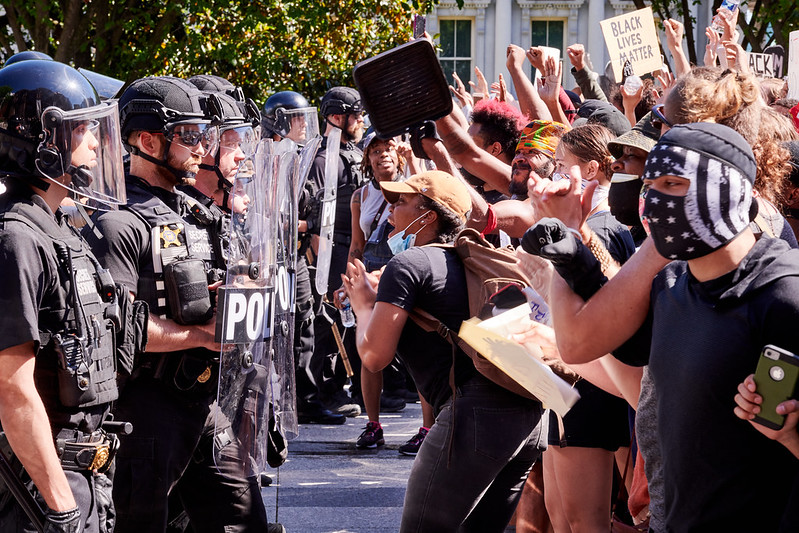
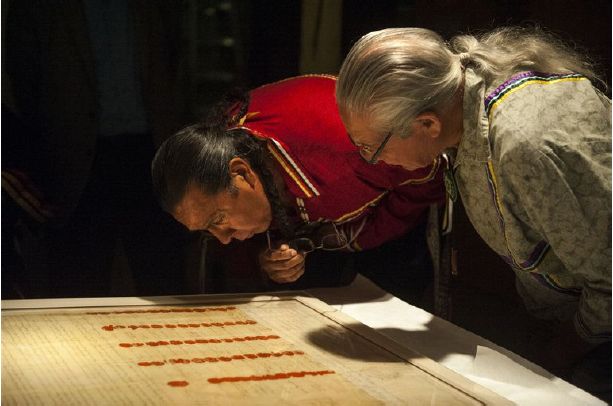
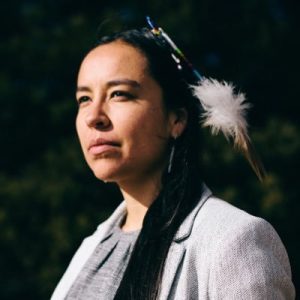 Diné (Navajo) land and water protector and poet Lyla June Johnston, co-founder of the Taos Peace and Reconciliation Council, notes the contradiction between Indigenous reverence for life and hating the oppressors:
Diné (Navajo) land and water protector and poet Lyla June Johnston, co-founder of the Taos Peace and Reconciliation Council, notes the contradiction between Indigenous reverence for life and hating the oppressors:
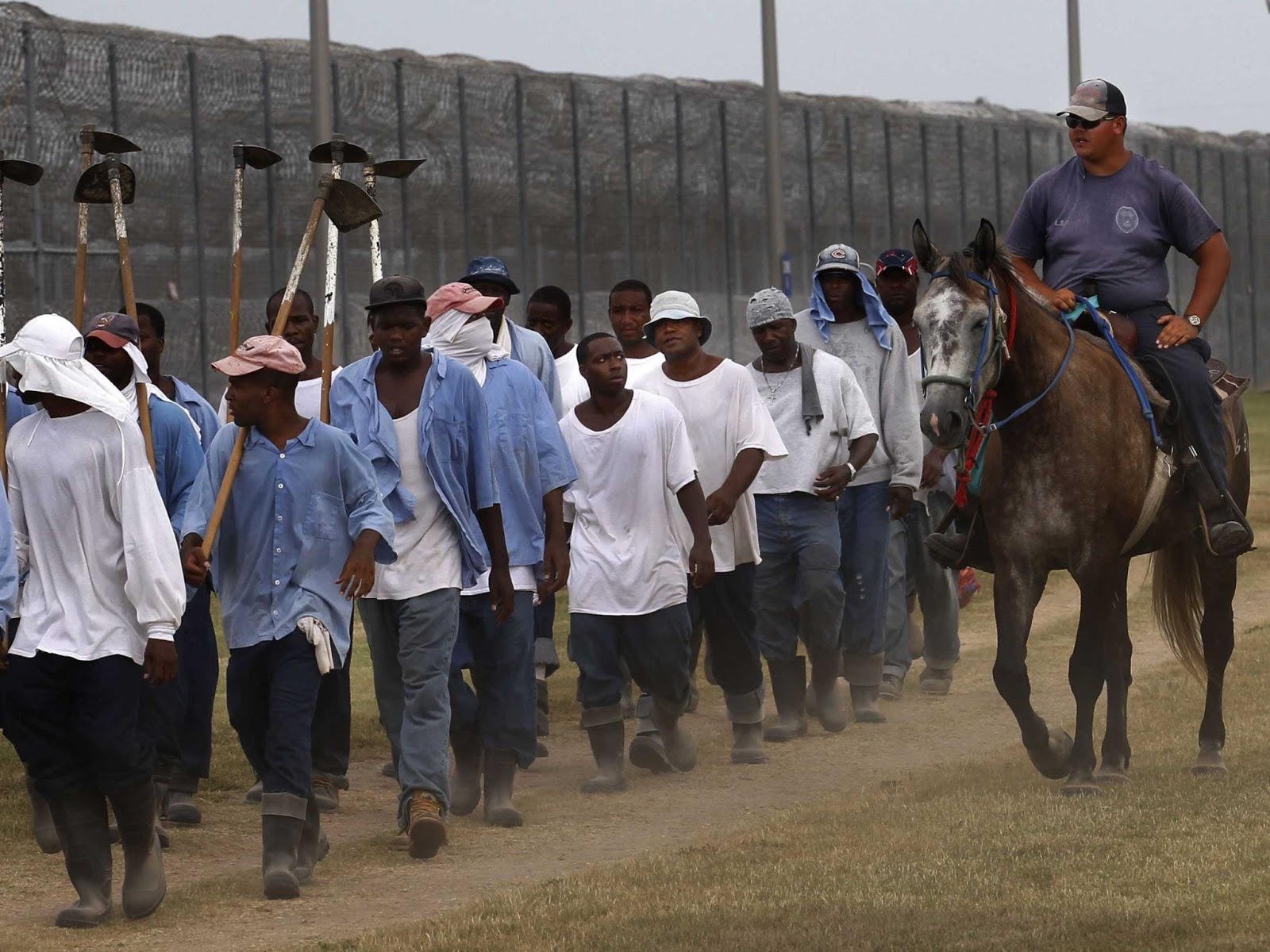
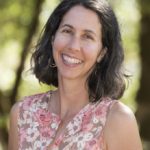
About Erica Etelson
The Labyrinth and the Black Madonna
The Labyrinth and the Black Madonna
When I was a nineteen-year-old architecture student I spent two weeks in Chartres Cathedral, studying the labyrinth. Most visiting Chartres are there only for a few hours—they are struck by its beauty, its perfect stained-glass windows, its sculptures which are some of the finest medieval art. They sense the holiness of this ancient pre-Christian site, which belonged to the Earth Mother, the Black Virgin, before it was dedicated to the Virgin Mary. But to spend two weeks inside this building is a very different experience, and I found myself completely immersed in sacred space. Chartres was the “blue-print cathedral” for the Gothic movement, and is an almost perfect geometric and harmonic creation. (One of the spiritual centers of medieval Europe, Chartres had an esoteric mystery school that taught sacred geometry as well as sacred music.) There is even a tradition that the stained-glass was made by alchemists, transmuting the light. Chartres Cathedral is an instrument designed to attune the soul of the worshiper, harmonizing the energies of heaven and earth.
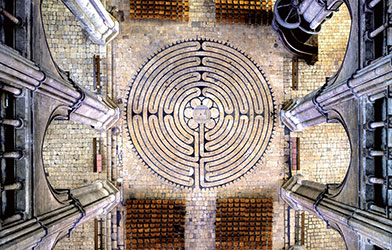 We stayed in the nunnery next door, and, together with a friend, I worked to accurately measure the labyrinth—a circular mandala-pattern, forty feet in diameter, depicted in blue and white stones near the west door. We moved away the chairs and spent hours following this ancient circuitous pattern that images the journey of the soul, the path to the center of the psyche.[1] Medieval pilgrims would kneel their way round the labyrinth’s maze until they reached the center, where they would find an image of the Minotaur (removed at the time of Napoleon), and then turn and look up at the magnificent west rose window, whose twelve-fold mandala images the heart center with luminous beauty.
We stayed in the nunnery next door, and, together with a friend, I worked to accurately measure the labyrinth—a circular mandala-pattern, forty feet in diameter, depicted in blue and white stones near the west door. We moved away the chairs and spent hours following this ancient circuitous pattern that images the journey of the soul, the path to the center of the psyche.[1] Medieval pilgrims would kneel their way round the labyrinth’s maze until they reached the center, where they would find an image of the Minotaur (removed at the time of Napoleon), and then turn and look up at the magnificent west rose window, whose twelve-fold mandala images the heart center with luminous beauty.
While there, one evening we witnessed the arrival of hundreds of students who had walked down from Paris. They surrounded the cathedral, joining hands, and then entering the nave, each person holding a candle—an individual and collective prayer. This simple and powerful image reaches me now half a century later, as a pandemic and ongoing social injustices call out for prayer, for our shared humanity. And this image of the labyrinth also speaks to the journey we are on—individually and together—a journey that takes us step by step back to the center, where we confront the beast of the Minotaur and then turn to the beauty of the heart.
The coronavirus has faced us with our darkest fears, sickness and death, and also shown us our shared humanity that has come together in this crisis—the single lights of care and compassion, that link together to form a community of love and support. And we have also had to face the breakdown of our economic system, so fragile it seems to be blown over by the breath of a virus, leaving millions unemployed, day-laborers destitute and hungry, food lines growing. Despite all the warning of a possible pandemic, there was no “plan B,” just the defenses of denial by authoritarian leaders, more concerned about politics and power than people.
And now as we begin to emerge from lockdown, from forced isolation, into what world are we returning? Our leaders, our corporations, custodians of consumerism, would like us to “return to normal” as quickly as possible. But what of our shared journey, our fears, our suffering and love? As a piece of graffiti in Hong Kong written early in the pandemic stated, “We can’t return to normal, because the normal that we had was precisely the problem.” Should we go back to cheap flights and disposable goods? Should we continue with our exploitation of nature, the imbalance that caused this crisis—the loss of habitat and biodiversity directly causing animal viruses to spread to humans—and the racial injustice and the economic structures that ensure the poor and destitute suffer most?
Racial injustice has also meant that in the United States many people of color, particularly African Americans, and also Native Americans, are experiencing more serious illness and deaths due to Covid-19 compared to white people.[2] And the continuing divisiveness of racial injustice, combined with the ongoing acts of police brutality, have brought protests to the streets of many American cities. The killing of George Floyd and so many others has struck at a deep wound in the American psyche, and we are witnessing both heartfelt solidarity, as well as agony and rage across the country. Once again there is a linking of hands in peaceful protest, but also a country trembling on the edge of violence. On our shared journey we need to embrace this collective pain with its roots in inequality. In a country already battered by the pandemic, do we have the strength to hold true to our deepest human values—equality, unity in diversity, justice?
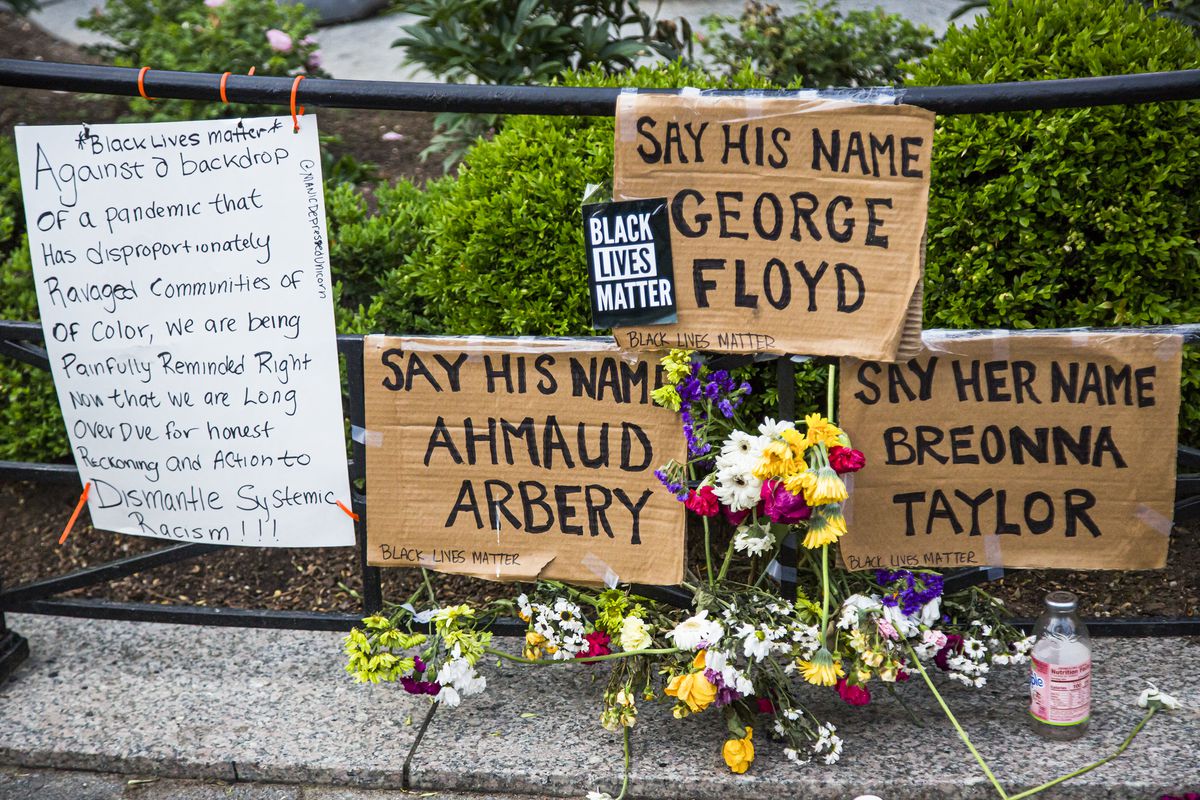
And what does this say of our shared future? Do we dare to really acknowledge that our image of “normal” is over, even though it appears we have no systemic change radical enough to answer our present ecological crisis and the interconnected social justice and economic equality that are so vitally needed? And in addition to the current crises, some of us have already seen an even more dire future. If the last months have shown our collective response to a well-documented and foreseeable pandemic, what does it say for a future of climate collapse?
Divisiveness,[3] injustice, and exploitation, surround us, while humanity and the Earth cry out for a different way of living. There is a pressing need to transition to ways that value life’s inherent unity and interdependent nature, ways that support our diverse human and other-than-human communities. Our culture has indoctrinated us with the idea of progress, but like many of our present patterns of denial this just covers over an older knowing we have lost, the ways of our ancestors who knew what was sacred and held the balance of the Earth. Part of my own journey has been to reawaken to these ancestral memories—memories of a simpler time, when humanity was still young and the Divine was a tangible presence in the air around, like the first sweetness of spring, buds opening, birds calling, “a strain of earth’s sweet being in the beginning.”[4] There was a knowing present then that has now become deeply hidden—a knowing of the sacred purpose of creation, of its beauty and wonder. And this knowing was coming alive, speaking to human beings in all the myriad voices of the world around, in the streams and storms, in the cries of the birds and the animals, in the first language of life. It was the joy of life communing with us.
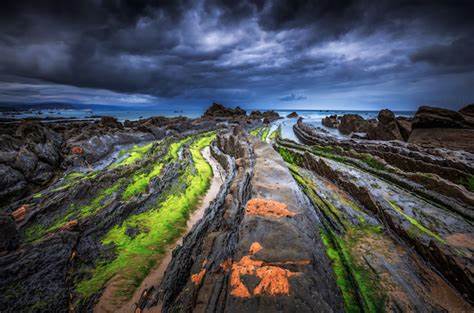 It was a time of wonder, when the colors of creation sparkled in the air of our dawning consciousness. Then all was known in its true sense, and every tree, every animal, every person, and every dream or songline knew where it belonged. And here, in this world, where human and divine could meet and recognize the wonder of what is, spirit and matter did not know any division. That time was a prayer without words, a prayer because all of creation was alive with light, with the song of the sacred. This is what I remember.
It was a time of wonder, when the colors of creation sparkled in the air of our dawning consciousness. Then all was known in its true sense, and every tree, every animal, every person, and every dream or songline knew where it belonged. And here, in this world, where human and divine could meet and recognize the wonder of what is, spirit and matter did not know any division. That time was a prayer without words, a prayer because all of creation was alive with light, with the song of the sacred. This is what I remember.
So much was given at this time, when the soul of humanity and the soul of the world were bonded together, and the Earth showed her generosity. The land was pristine and its sacred nature known and honored. It was a time of beginning, the time of the “Original Instructions,” when the sacred names of creation were given to human beings, first to the shamans, healers, and keepers of the sacred ways—the names of animals that evoked their power, the names of plants that revealed their healing properties, the names of rivers and mountains that ensured that the world was kept in harmony and balance—and through them humanity and the created world came into relationship and were woven together in praise and thanksgiving. There was a purity of intention in this relationship between humanity and the Earth and all its myriad creatures; their partnership had a sacred purpose.
Later it all began to change, and that is the story of separation, the myth of the Fall; and the patterns of distortion that covered the Earth became stronger and stronger, until today we find our self in a world that has lost its way, that is spinning more and more out of balance. But this memory of how it was in the beginning, this story that is so ancient, that belongs to the Earth at our very beginning, has also become my own story because the Earth is calling, crying out, and I know that there is another way to be. And as each crisis is an opportunity, in this moment between the in-breath of this pandemic and the out-breath of our collective push to return to normal, I am drawn to return to this way of being with the Earth, something so essential and long forgotten, this note that belongs to a deep love for the Earth Herself.
We cannot return to the innocence of this earlier time, but this bond between humanity and creation remains, hidden beneath all the debris of our culture, the inner and outer wasteland we have created. It is part of the link of love that holds everything together, the mystery and power, the primal magic woven into the inner structure of the Earth, long known to mystics, shamans and healers. And if we look carefully, attentive to what is around us, this wonder is still present—in a child’s joyful smile, wildflowers opening to the sun, a fox found curled asleep in my garden. Underneath all of today’s distortions we can reconnect to this magic, this awakened relationship with the Earth. It needs to be remembered.
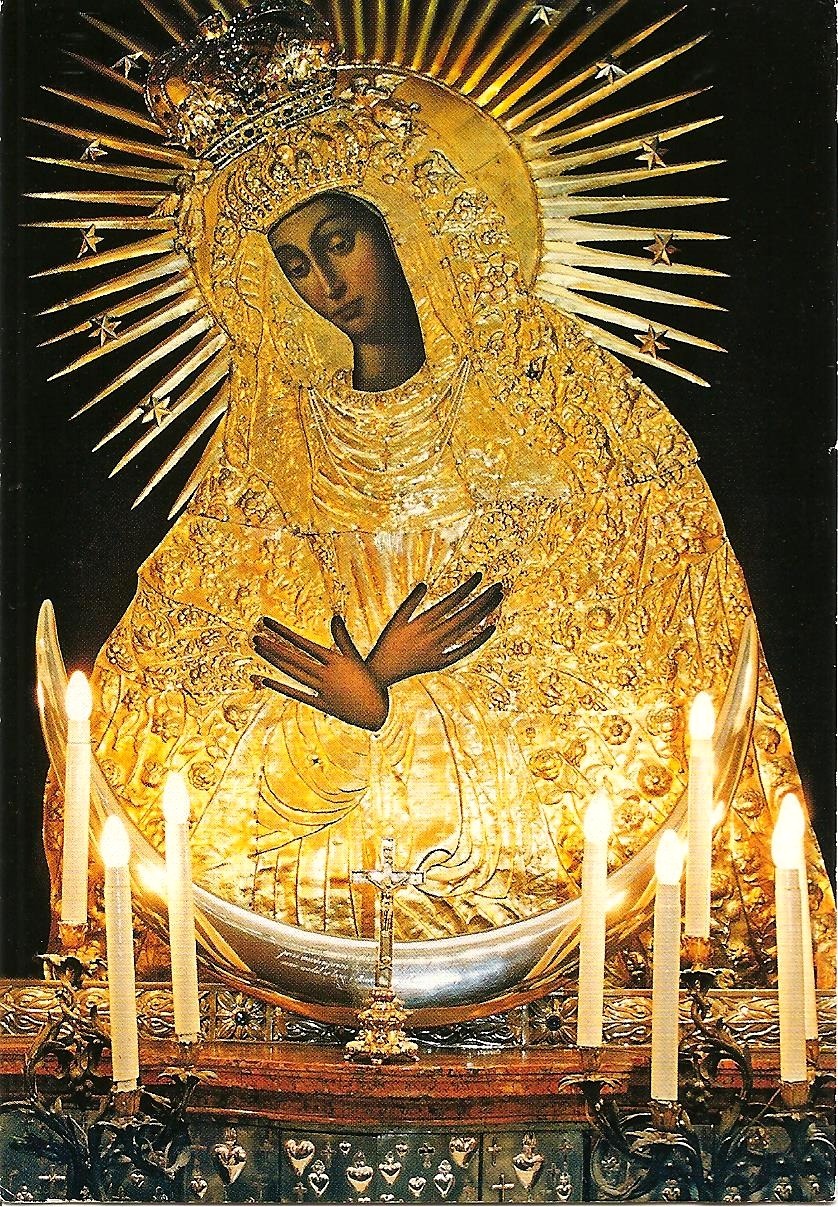 Yes, there is the final message of the labyrinth: the love and light that shone in midst of the darkness, the simple but essential values of care and compassion that hold us and bring us together through this crisis, and belong to our shared journey. But there is also something essential that was present in my early experience of Chartres: the connection to the Earth, the Black Madonna, the ancient mysteries we have long forgotten.
Yes, there is the final message of the labyrinth: the love and light that shone in midst of the darkness, the simple but essential values of care and compassion that hold us and bring us together through this crisis, and belong to our shared journey. But there is also something essential that was present in my early experience of Chartres: the connection to the Earth, the Black Madonna, the ancient mysteries we have long forgotten.
There will be no simple answer to the coming years, except the love and prayer that we hold in our hearts, and the companionship we live with each other and the Earth. We are the inhabitants of a civilization that has lost its way, that has forgotten that the Earth is a living sacred being. And so we stand at a door never before opened, at a crossroads never before reached, when the fate of humanity and the whole web of life hang in the balance. What does it mean to be present at this time of a great dying when the wells run dry and the rivers are toxic? And where are those who hold the balance of the worlds—the rainmaker sitting in his hut holding an inner equilibrium, the monk whose prayer beads and mantras keep the worlds in tune? Yes, a few essential things remain, like joy and love and the beauty of spring blossoms, the stars or a sunset. And in our hearts there is a seed of a future that returns to the beginning, to when the Source ran free and the names of creation sang in the wind.
[1] The result of our work was an article, Chartres Maze, a Model of the Universe?, by Keith Critchlow, Jane Carroll, and Llewellyn Vaughan-Lee, which suggests that the maze is a symbolic image of both the planets and the psyche.
[2] See “Coronavirus in African Americans and Other People of Color” by Sherita Hill Golden, M.D., M.H.S., published by Johns Hopkins Medicine.
[3] A divisiveness dangerously encouraged by social media, as evidenced in the algorithms of Facebook. In 2018 Facebook’s experts found that the platform exploited the human brain’s attraction to divisiveness, feeding users “more and more divisive content in an effort to gain user attention & increase time on the platform.”
[4] What is all this juice and all this joy?
A strain of earth’s sweet being in the beginning
In Eden garden.
‑Gerald Manley Hopkins, “Spring.”

About Llewellyn Vaughan-Lee
Llewellyn Vaughan-Lee is Sufi teacher and author. He has authored a recent podcast, Stories for a Living Future.
The focus of his writing and teaching is on spiritual responsibility in our present time of transition, spiritual ecology and an awakening global consciousness of oneness. His many books include Spiritual Ecology: The Cry of the Earth and Including the Earth in Our Prayers: A Global Dimension to Spiritual Practice.
Reframing Global Citizenship
Reframing Global Citizenship
Is there a better way to organize the movement for positive change? Since, as Paul Raskin wisely observes, a Global Citizens Movement may be conceptualized as a “polycentric ecology,” perhaps we can take inspiration from how ecosystems themselves organize.
A key underlying principle of ecosystems, along with other complex adaptive systems, is reciprocal causality: all the disparate parts work together to form a coherent whole, while the system as a whole gives cohesion to the activities of each of the parts. In a natural ecology, systemic coherence emerges from a myriad of prior evolutionary adaptations. In human systems, the coherence arises in the form of an organizing idea or ideas. For example, as the Scientific Revolution emerged in early modern Europe, there were many different discoveries and theoretical breakthroughs, each of which reinforced each other’s impact through building on the cohering metaphor of “nature as a machine” and following Francis Bacon’s clarion call to “conquer nature.”
In more recent times, we can learn from the rise of what is arguably the most successful transformational movement in modern history: neoliberalism. When the Mont Pelerin Society formed in 1947, it laid the conditions for powerful reciprocal causality by encouraging diverse perspectives expressed through a shared manifold of meaning: the primacy of individual liberty. The society declared in its Statement of Aims that its objective was “solely, by facilitating the exchange of views among minds inspired by certain ideals and broad conceptions held in common, to contribute to the preservation and improvement of the free society.”
At that time, the ideas presented by neoliberal thinkers were utterly rejected by mainstream culture. Yet, as a result of a carefully orchestrated strategy, placing neoliberal opinion-shapers in the centers of powerful networks where they could seed conversations around their ideas, they succeeded over a few decades in shifting what became known as the Overton window: the set of ideas considered acceptable to mainstream political discourse.
Our only hope for a viable future is to shift the Overton window ourselves—not just back to where it was before neoliberalism, but into completely different terrain. The most important driver of that shift will be an alternative shared manifold of meaning: the idea of an Ecological Civilization (Eco Civ) built on life-affirming principles, setting the conditions for all people to flourish on a thriving, living Earth and leading to profoundly beneficial changes in virtually every aspect of society.
The vision of an ecological civilization invites an integrative conceptual architecture for diverse progressive groups worldwide. Giving a common name to a multiplicity of movements has the potential to unite people from around the world in a common undertaking.
In the broadest terms, an ecological civilization encompasses themes of multiple groups from around the world. It incorporates Indigenous concepts such as buen vivir and ubuntu, insights from ecological economics and commons theory, and principles from the permaculture, Transition Towns, degrowth, and agroecology movements. It reflects spiritual underpinnings of Deep Ecology, engaged Buddhism, and universalist Christian theology. It embraces ideas from the anti-globalization, eco-socialist, social justice, LGBTQ rights, and Rights of Nature movements, among others. Ultimately, it has the potential to catalyze globally dispersed “blessed unrest” into a coherent, benevolent force for societal transformation.
However, an idea by itself, no matter how powerful, is not enough. As the Mont Pelerin Society understood, an organizing principle must be manifested through a concerted long-term strategy—in their case, seeding new ideas throughout the academy, then converting them into policies through a series of think tanks, new media outlets, and alliances with the business community and broadcast media.
There are of, course, significant differences between their approach and what is needed now. The Eco Civ movement would need to be heterarchical rather than hierarchical and would need to incorporate widely diverse populations rather than mostly elite white males. Our source of power is not so much financial as in the hearts and minds of the billions of people around the world who desire a better future for themselves and their offspring. And while the Internet age can create dangerously separate silos, it also enhances the potential for stunningly rapid transmission of new ideas.
The systems thinker Ilya Prigogine once famously described how, when complex systems transition from one stable state to another, the character of the subsequent state is influenced by “small islands of coherence in a sea of chaos” which have “the capacity to lift the entire system to a higher order.” These “islands of coherence” already exist throughout the world—generated by distinct visionary ideas, grassroots movements, and community initiatives laying down pathways toward a life-affirming future. However, as suggested by the principle of reciprocal causality, while these “islands” may form autonomously at grassroots levels, their collective power is significantly enhanced by a cohesive framework that amplifies their energy and supports their trajectory—a “transformation catalyst” in the words of Sandra Waddock.
We need a life-affirming, up-to-date version of the Mont Pelerin Society: an Ecological Civilization Coalition. This could be conceived as a loosely organized alliance of prominent changemakers with connections to a more focused central hub. The hub could be organized on sociocracy principles to avoid hierarchical leadership. As a focused organization, it could source funds from donors seeking transformative change and funnel resources to identified “islands of coherence” in various domains of society. A team of dedicated professionals could work with these “islands” to identify and help disseminate best practices and principles for planetary-wide adoption in a process of “fractal scaling.” Finally, as a media hub, it could facilitate a coherent articulation of the Eco Civ concept in mainstream media outlets to help shift the Overton window.
Whether we can reweave the strands of our unraveling civilization into a flourishing future will only be known on the other side of the turmoil that lies ahead this century. But as each climate disaster brings our current system closer to collapse, we have an overriding obligation to future generations, and to life itself, to shine a directional beacon through the darkness of our times to a potentially brighter future—and to help lay down a trail toward it.
“The Eco-Civilization Framework,” is a contribution to GTI Forum “What’s Next for the Global Movement?,” Great Transition Initiative (January 2024), https://greattransition.org/gti-forum/global-movement-whats-next-lent.
Return to Strength in Openness Contents Page
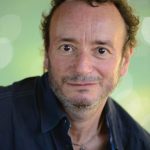
About Jeremy Lent
Jeremy Lent is author of The Patterning Instinct: A Cultural History of Humanity’s Search for Meaning, which investigates how different cultures have made sense of the universe and how their underlying values have changed the course of history. His new book, The Web of Meaning: Integrating Science and Traditional Wisdom to Find Our Place in the Universe, was published in Spring 2021 (New Society Press: North America | Profile Books: UK & Commonwealth). For more information visit jeremylent.com.
Gaza on My Mind
Gaza on My Mind
Talking about Gaza can be scary. I have expressed my horror about the savage Hamas attack on Israelis, and the heartbreaking plight of the hostages, but when I criticize Israeli policies and the bombing of Gaza, some of my Jewish friends have called me antisemitic. This is hurtful. To say this is a controversial subject is an understatement. I am not a scholar or historian. I am not Muslim or Jewish. So why do I feel compelled to discuss this?
Though I do not identify with any organized religion, I do identify as an American. Not the nationalistic “my country right or wrong” American, but rather a Langston Hughes style American who sees our country as “the land that never has been yet — and yet must be — a land where every man is free.” I am ashamed of American’s sordid history – the genocide of Native Americans, the slavery of Africans, the unjust treatment of African Americans since emancipation, and other ongoing violations of our principles. l am an American who, like the poet Hughes, has sworn that someday America will be the country where our ideals of liberty and justice for all people will be achieved. It is vital to me that US foreign policy confirms and reflects these ideals. As I once opposed the bombing of the Vietnamese and then the Iraqis, I now oppose the US financed bombing of Gaza and uphold the right of Palestinians to self-determination.
This article explains how I came to oppose US military support of Israel’s war on Gaza, as well as its occupation of the Palestinian territories. My story begins twenty years ago, in September 2003, when I traveled to Gaza to honor the life and death of a twenty-three-year-old American peace activist named Rachel Corrie. She was a volunteer human rights observer with the International Solidarity Movement, a pro-Palestinian group founded by Israeli and Palestinian activists, who were committed to resisting the Israeli occupation by using Gandhian nonviolent practices and protest. When I learned that Rachel had been crushed to death on March 16, 2003, by an Israeli-owned bulldozer as she stood before the home of a Palestinian physician and his family to defend it from demolition, I felt compelled to go there and to understand why.
I called my activist friend Medea Benjamin, co-founder of Global Exchange and Code Pink, to ask if she would come with me to Gaza. Though she had been avoiding involvement in the conflict in deference to her Jewish parents, Medea was now ready to go. I recruited a delegation of seven women, including two Jewish and one Muslim, and Global Exchange organized our itinerary to meet with Israeli and Palestinian human rights groups in Israel, Gaza, and the West Bank.
The purpose of our 2003 trip was to gain insight into the conflict between Israel and the occupied Palestinian territories. My mission was also to establish relationships with a Jewish-owned restaurant in Israel and an Arab-owned restaurant in the occupied Palestinian territories as part of the White Dog Cafe’s International Sister Restaurant program, “Table for Five Billion.” Beginning in 1987 the program had brought delegations of our customers and staff to Nicaragua, Cuba, Vietnam, and the Soviet Union to experience the impact of US foreign policy and work toward a world where everyone (five billion then, and even more now) has a place at the table.
When we arrived in Gaza in September of 2003, our group of travelers sat sipping coffee in a busy outdoor café, much like any European café, in Gaza City. When we heard the hum of an airplane in the distance, I saw alarm on the faces of our Palestinian hosts. On the way to the café, we had seen the burned- out carcass of a car blocking a narrow street in a busy marketplace and been told that it had been hit by an Israeli Defense Force (IDF) missile, killing many innocent bystanders. Even in this peaceful café setting, I saw how people lived in fear in Gaza — called by many “an open-air prison,” from which there was little escape.
Twenty years later, fear has consumed all of Gaza night and day as Israeli fighters unleash the most destructive bombing campaign in modern history, already having used more than twice the firepower of the nuclear bomb dropped on Hiroshima. As many as 27,000 Palestinians have been killed, including more than 12,000 children and 66,000 wounded. No hospitals are fully functional. There is no anesthesia for surgeries. No antibiotics to stave of deadly infections. Families and orphans of those killed are sleeping in tents and on the street. One toilet is available for every 500 people, according to the World Health Organization. Since October 7, over 400 doctors and medical staff have been killed. The UN has lost 142 personnel, the largest number lost in any conflict in history. More than one hundred and twenty journalists have been killed, and the International Federation of Journalists in NYC has accused the IDF of ‘deliberately targeting’ media professionals working in Gaza
One of the most moving experiences for me on our 2003 trip was meeting Rami Elhannan, an Israeli whose 14-year-old daughter had been killed by a Hamas suicide bomber on her way home from school in 1997. After a year of struggling with anger and despair, Rami joined Bereaved Families Supporting Reconciliation and Peace, a group of Israeli and Palestinian families who had each lost loved ones to the conflict. He told us that his life had taken on new meaning as he worked in partnership with Palestinians to stop violence and end the occupation.
Now twenty years later, Hamas has only gained in strength. Their murderous attack on October 7, killing 1200 Israelis and taking 250 hostages is the tragic result of what they have become. What gives me hope is that Rami, even after this outrage, continues his work to end the violence and co-exist peacefully with Palestinians. The reconciliation and peace organization, now called Parents Circle, is co-directed by Rami and his Palestinian counterpart, Bassam Aramin, whose 10-year-old daughter was killed in 2007 by an IDF soldier using a US issued M-16 rifle, as she stood outside of her school.
In a 2023 interview, Rami explained that twenty-five years ago, he had never seen a Palestinian as a human being. But through the Parents Circle he had learned the music, the culture, and the stories of the Palestinians, which he explained had been deliberately hidden from him by the Israeli education system. When asked how to end the conflict, Rami said that the most important word is “respect” and to see Palestinians as equal partners in building a peaceful future.
In 2003, when we arrived in Rafah, a Palestinian city in the southernmost part of Gaza, near the Israeli-controlled border with Egypt, we visited the home of a Palestinian school headmaster Khalil Bashir. We were horrified to find that Israeli soldiers had not only destroyed his groves of date and olive trees and two acres of greenhouses, but the soldiers had also taken over the upper floors of his three-story home as an army base to protect the newly erected homes of Israeli settlers nearby. Despite this unimaginable disrespect, Khalil continued to teach non-violence and peaceful coexistence to his children and students.
In a letter to her mother in February 2003, Rachel Corrie wrote about the people of Gaza:
“I am amazed at their strength in being able to defend such a large degree of their humanity – laughter, generosity, family-time – against the incredible horror occurring in their lives and against the constant presence of death. I am also discovering a degree of strength and of basic ability for humans to remain human in the direst of circumstances. I think the word is dignity.”
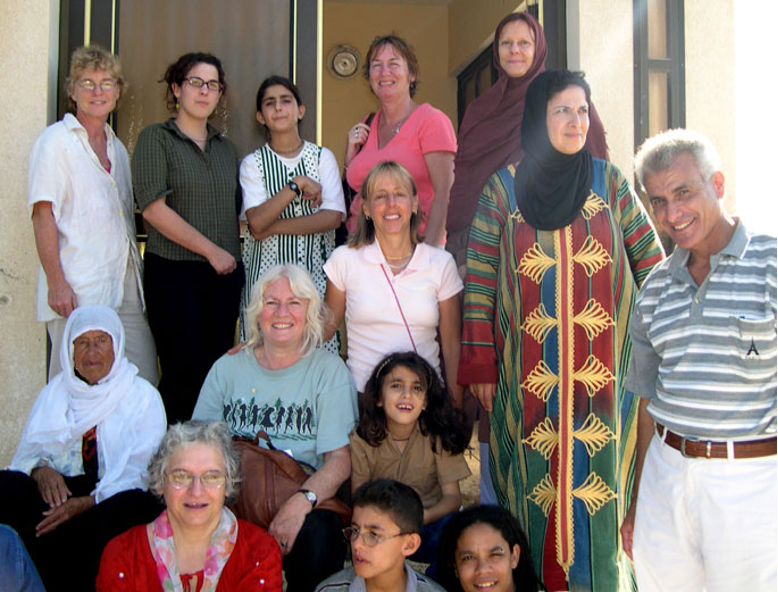
We later learned that in 2004 Khalil’s 15-year-old son, Yousef Bashir, had been shot in the back by an IDF soldier. Because three UN officials witnessed this, he was sent to an Israeli hospital where he slowly recovered. Since then, Yousef moved to the US and wrote a book about his father’s dedication to non-violence. In a 2019 New York Times op-ed, he said this about the soldier who shot him: “I wish we could talk. I would tell him that I want to do my part to make peace between our peoples more possible, the way my father taught me. I would tell him that I have forgiven him.”In Rafah, our delegation next went to the place where Rachael Corrie was killed. We stood solemnly before the pile of rubble that marked where she had been crushed under an armored bulldozer driven by an IDF soldier. Prior to her death, over six hundred houses had been destroyed in Rafah, along with Palestinian businesses, including 25 greenhouses, the source of income for three hundred people. In her last email to her father written less than two weeks before her death, 23-year-old Rachel wrote:
“Coming here is one of the better things I’ve ever done. So when I sound crazy, or if the Israeli military should break with their racist tendency not to injure white people, please pin the reason squarely on the fact that I am in the midst of a genocide which I am also indirectly supporting, and for which my government is largely responsible.”
I understand that some readers who identify with Israel may not agree with Rachel’s analysis of the situation, but it’s important to know how she saw it and to admire her willingness to stand up to the powerful forces she viewed as oppressors, as we hope someone would do for us and our families if we were in such danger. Twenty years later, in 2023, I still picture the pile of rubble marking the spot where Rachel tragically lost her life amid the destruction of Palestinian homes and businesses. I am deeply saddened to know that today the rubble has grown to encompass much of Gaza, with over 70% of housing demolished by Israeli bombs, displacing 90% of the population. Untold thousands of Palestinian civilians in Gaza, over a third children and infants, have been crushed to death in their own homes.
In 2003, we saw so many Palestinian children, often dressed in neat school uniforms, their eyes bright and faces curious to meet strangers. They pointed out the bullet holes in their houses and showed us shell casings they had collected during the IDF incursions, and they pointed to the place where Tom Hurtnell, a young English volunteer, was shot in the head as he ran to grab a child who was caught in gunfire. In Hebron, a Palestinian town in the West Bank where four hundred Jewish settlers from Russia had illegally taken residence, we met with Chris Brown from Christian Peacekeepers Team. He explained how his group escorted children to school through army barricades, where the IDF soldiers point guns at them, and past hostile settlers who hurl abuse, and sometimes spit on and physically attack the children. By 2003, over six hundred Palestinian children had died in the conflict at the hands of the IDF or the settlers. We visited a school where the children sang to welcome us, and as we looked at their promising young faces, it was hard not to despair over the sheer hopelessness of their future.
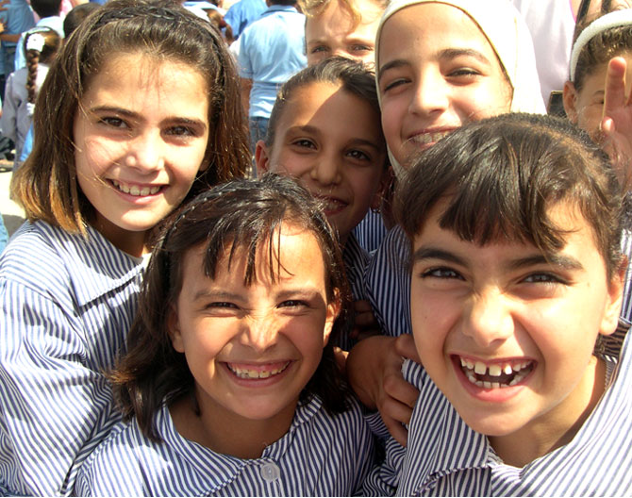
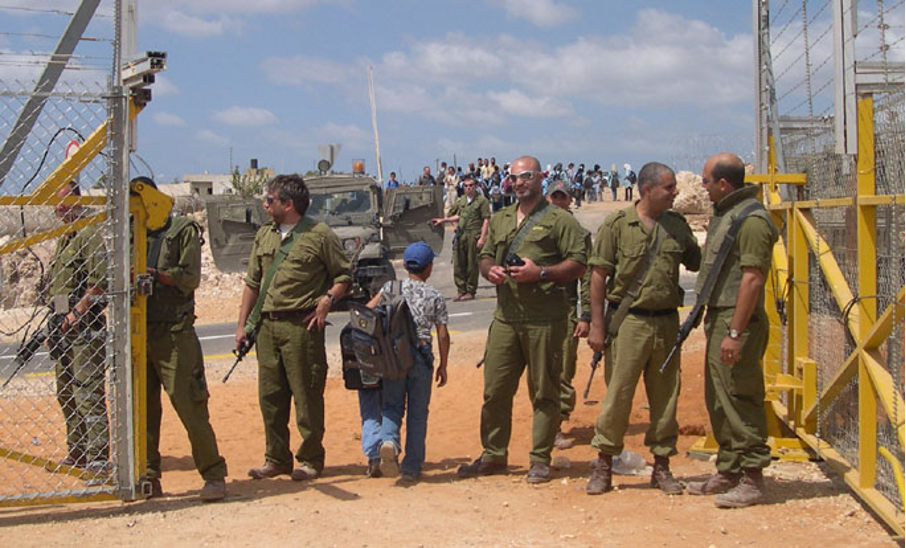 Palestinian school children passing through an IDF checkpoint on their way to school, Hebron, West Bank, 2003.
Palestinian school children passing through an IDF checkpoint on their way to school, Hebron, West Bank, 2003. I never imagined that twenty years later, against international law, there would be over 700,000 settlers in the West Bank and East Jerusalem occupying 40% of Palestinian land against international law. Just since October, 739 Palestinians in the West Bank, including 309 children, have been displaced, following the destruction of 115 homes. The IDF has armed settlers in the West Bank, giving them impunity to violently force Palestinians from their homes, increasing acts of violence from an average of three a day to seven. Recently, a Palestinian-American teenager visiting his cousins was shot in the head. He is one of 369 killed in the West Bank since October, including ninety-five children.As our 2003 delegation traveled through the West Bank, we saw how the yards of the settlers’ homes were lush and green with well-watered grass, in sharp contrast to the arid, brown, and lifeless Palestinian areas. At a large Jewish settlement near Jerusalem, we even saw people enjoying an Olympic size swimming pool, while the Palestinians were forced to survive on 20% of the available water, even though their population is far greater, and did not have enough water to grow their crops to feed their people.
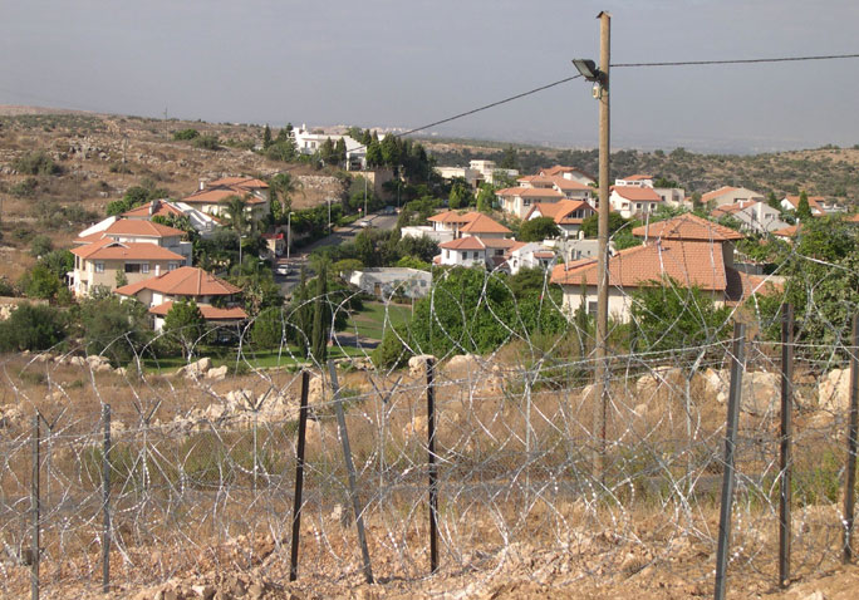
Though this seemed so unfair back in 2003, it would have been unimaginable to think that, in response to the Hamas attack on October 7, the Israelis would cut off ALL water supply to the entire population of Gaza, as well as all food, fuel and medical supplies, leaving Palestinians to die of starvation, dehydration, and disease. Over 70% of the population is drinking contaminated or salty water, according to the UN. Recently, the World Food Program reported, “In Gaza at this moment, literally the whole population is in crisis level of hunger or worse. And of those people, about 26%, meaning one-quarter of the population is literally starving – about 577,000 people.” According to the UN, famine is now “inevitable” following the news that the US and some other Western countries have suspended funding to the UN Relief and Works Agency for Palestinian Refugees (UNRWA) because Israel has accused 12 of its 13,000 employees to have been involved in the October 7 attack. Though nine of the accused have been fired, one has died, and two are under investigation, funding needed to combat the famine that endangers millions of Palestinians has been denied.While our delegation was in Tel Aviv, we told a group of Israeli youth that we were staying with a Palestinian family. Their eyes widened with fear and surprise, as they warned us that we would be raped and murdered because Palestinians were dangerous terrorists. Though I heard Israelis claim that Palestinian youth are taught to hate Jews, this experience made me wonder if Israeli youth had been taught that all Palestinians are terrorists.
When I watched the 2023 film Israelism, produced by courageous young Jewish filmmakers, I finally understood the racist remarks of the Israeli youth we had met 20 years before. According to the documentary, Israeli students, as well as visiting American students, are subject to racist and militaristic indoctrination that teaches them to fear, loathe, and dehumanize Palestinians. On both sides, it is hatred of “the other” that underlies and inflames the conflict.
The Israeli policy of demolishing homes had led to Rachel’s death, and so in 2003 we met with Angela Godfrey-Goldstein from the Israeli Committee Against Home Demolition, where we learned how the IDF was, in violation of international law, demolishing Palestinian homes, their means of income and their cultural institutions, and replacing them with Jewish settlements. One of the most surprising and horrifying parts of our 2023 trip was seeing the frequent IDF checkpoints on roadways where Palestinians were stopped, searched, delayed, and humiliated while waiting for hours in the hot sun or rain. As a result, travel that should take minutes takes hours and even days, separating people from their jobs, schools, friends, and family. An Israeli peace group, Bat Shalom, told us that over sixty Palestinian newborns, unable to get to the hospital, had died at checkpoints. In contrast, modern highways connecting Jewish settlements were “Jews Only,” which reminded me of the “Whites Only” drinking fountains I had been shocked to see as a young girl visiting the US South.
Lately, I have been hearing the term “settler colonialism” in relation to the war in Gaza. I was not exactly sure what it meant, so I checked back in with the Israeli Committee Against Home Demolition and read an October 2023 article by its founder, American Israeli Jeff Halper. In reading this article, I came to understand why Rachel and many thousands of Palestinians have been tragically killed. As I write, the rightwing leadership in Israel is publicly advocating for the permanent displacement of Palestinians and the building of Jewish settlements in Gaza. For me, Halper’s description of “settler colonialism” rings true to what I have witnessed in Palestine, and to what happened in the founding of the US. I want to believe that, lost in our own shameful colonial past, there may have been non-violent settlers in the US who sought peaceful coexistence with the Native Americans, and stood up courageously as Rachel did. Halper wrote:
“Settler colonialism is a deliberate, structured, and prolonged process in which one people not only takes over the country of another – violently by necessity – but seeks to transform it from what it was at the time of invasion into an entirely new entity, a new country reflecting the settlers’ presence, entirely erasing the natives’ presence and history. It is not a “conflict”. There are no “sides”, no symmetry of “violence”. The settler project is a unilateral one which must deny the indigenous population’s existence as a people endowed with rights to their land and identities if it is to claim the country exclusively for itself. Following from that is the need to move the indigenous off their land, killing them, driving them out of the country or confining them to tiny enclaves, so as to settle the land with the settler population itself. Then comes the process of erasure: erasing the physical and cultural presence of the indigenous from the landscape and replacing it with the settlers’ own manufactured history, heritage, national narrative and national identity. After a prolonged process of violent displacement and the pacification of those amongst the indigenous who remain, the settler project concludes quietly. Now the world is presented with a normal, peace-loving, democratic country remade in the settler’s image, and the settler colony fosters a popular perception that it is the “real” country. (Try buying a plane ticket to Palestine.) The process of normalization is complete; any further resistance on the part of the native population is criminalized as “terrorism” and, as such, is effectively de-politicized and delegitimized.”
On February 15, 2003, a month before Rachel Corrie’s death, 25 million people in over 100 countries around the world took to the streets saying NO to George Bush’s war in Iraq. It was the largest peace demonstration in world history. On February 28, Rachel wrote:
“I look forward to more moments like February 15 when civil society wakes up en masse and issues massive and resonant evidence of its conscience, it’s unwillingness to be repressed, and it’s compassion for the suffering of others.”
Twenty years later, as Rachel Corrie hoped, global consciousness is growing. Millions of people around the world are holding massive demonstrations — in London, Tokyo, New York, Rome, Athens, Sydney, Jakarta, Istanbul, Bangkok, Sao Paulo, Bucharest, Paris, Berlin, and Johannesburg — calling for a ceasefire and the liberation of the long oppressed Palestinian people. Many of these protests are organized by Jewish organizations who stand squarely for peace and human rights for all. Israelis, in partnership with Palestinians, have formed groups such as A Land for All and Standing Together and are working on plans for a future of peaceful coexistence in two neighboring states. The current crisis makes them even more determined to achieve their vision.
Having gained the world’s attention, could the tragedy of Gaza possibly provide the opportunity for a turning point in human civilization when the people of the world give birth to a new world order built on the idea that we are all one, with no them and us, and that war is obsolete? On February 28, just a couple weeks before her death, Rachel wrote to her mother:
“I think I could see a Palestinian state or a democratic Israeli-Palestinian state within my lifetime. I think freedom for Palestine could be an incredible source of hope to people struggling all over the world. I think it could also be an incredible inspiration to Arab people in the Middle East, who are struggling under undemocratic regimes, which the US supports. I look forward to increasing numbers of middle-class privileged people like you and me becoming aware of these structures that support our privilege and beginning to support the work of those who aren’t privileged to dismantle those structures.”
In 1995, White Dog Café began holding a Freedom Seder, a celebration of the exodus of the Jewish people from bondage as slaves in Egypt, which we continued every Passover, until I retired and sold the business in 2009. A rabbi would preside, and each year we created a booklet, a Haggadah, to accompany the service, tell the story, and share the ‘ten plagues’ of our time. Often a member of another community that was fighting oppression would also speak. Our purpose was to spread the Jewish message of freedom from oppression for all people — that all people are created in the image of God and deserve to be treated with dignity and respect.
I can understand that for many Jews the actions of the Israeli government are at odds with what they believe are at the heart of Judaism and its wise teachings —hence the protest signs, “Not in My Name.” Young American Jews, who have organized to reclaim Judaism in the spirit of seeing God in all people, embody Rachel’s dream for peace and justice:
Jewish Voice for Peace says, “We imagine Jewish Israelis joining Palestinians to build a just society, rooted in equality rather than supremacy, dignity rather than domination, democracy rather than dispossession. A society where every life is precious.”
If Not Now, a movement led by young Jews, says, “We call on our community to imagine a future beyond “us or them” — where Israelis and Palestinians are both safe: A future of equality, where everyone from the river to the sea has individual and collective rights to safety, the resources they need to live, freedom of movement, and political representation.”
My hope for peace in Israel and Palestine, and for a world where everyone has a place at the table, lies largely with these young people who stand as beacons of light in the darkness. As was Rachel, they are courageous to oppose racism and militarism and call for Israel to be a model of coexistence that the world so desperately needs. If not now, when?
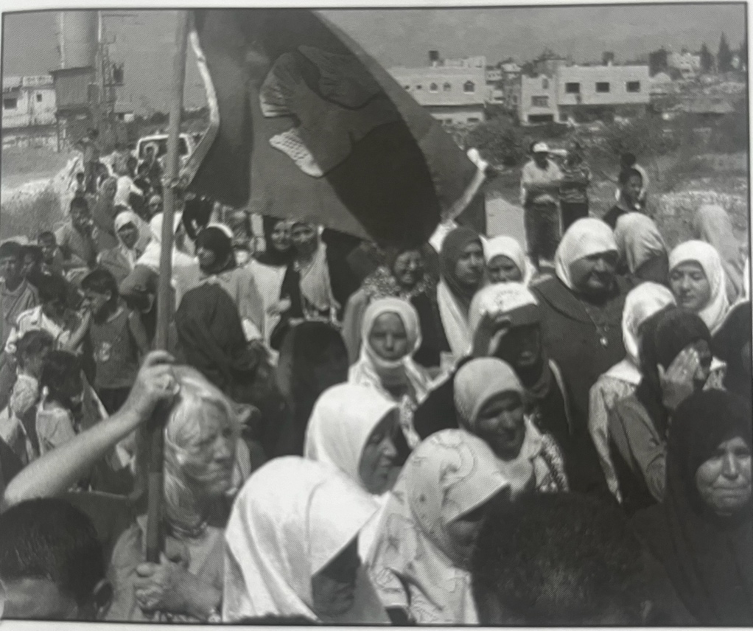 Judy and the delegation of American women joined 200 Palestinian women and 250 Israeli women on September 6, 2003, in Talkarem, West Bank, to protest the Apartheid Wall that separated the villagers from 7000 acres of their agricultural land and 26 wells. The Israeli women brought school supplies to the gate as a gift to the Palestinians. The IDF teargassed those of us on the Palestinian side of the wall. Photographer unknown.
Judy and the delegation of American women joined 200 Palestinian women and 250 Israeli women on September 6, 2003, in Talkarem, West Bank, to protest the Apartheid Wall that separated the villagers from 7000 acres of their agricultural land and 26 wells. The Israeli women brought school supplies to the gate as a gift to the Palestinians. The IDF teargassed those of us on the Palestinian side of the wall. Photographer unknown.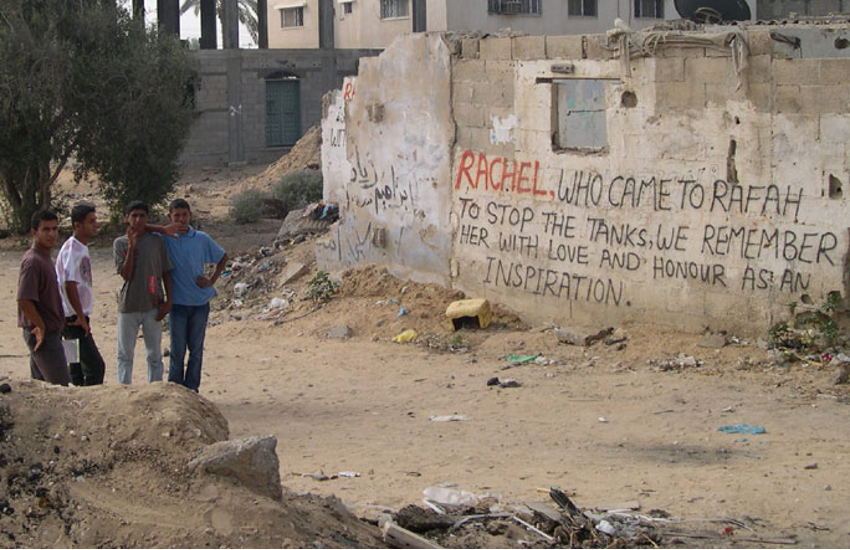
Return to Strength in Openness Contents Page
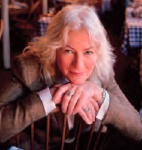
About Judy Wicks
Judy Wicks, Cofounder and Board Chair Emeritus of Business Alliance for Local Living Economies (BALLE), is an international leader and speaker in the local-living-economies movement. She is former owner of the White Dog Café, acclaimed for its socially and environmentally responsible business practices. She is also the founder of the Sustainable Business Network of Greater Philadelphia and Fair Food, both incubated at the White Dog Café Foundation and supported by the restaurant’s profits. For more, visit www.judywicks.com.
Building Unified Social Movements
Building Unified Social Movements
Social movements and progressives worldwide today can learn a great deal from what Moses Mayekiso said in 1984 when, in a short period of time, 25,000 South African metalworkers had come out on strike during the apartheid period, which, together with others, he followed through by building the NUMSA as an enduring national organization.1 Organizing such a show of resistance landed him and four others in jail for treason under South Africa’s then draconian Internal Security Act. In the current polycrisis, we are seeing our democratic space increasingly narrowing, globally.
Unity is important because we know that we are weak. Many new movements in both the Global North and South rightly understand the need for equity and solidarity. However, many do not see that to achieve our desired outcomes, tilting the balance of forces in society on both national and global levels is essential. The resolution of conflicts will be greatly determined by wider power structures within the world economy and systems. For that, we need unity, and there is still a lot of work to be done. How do we address the global imperative of building a strong and enduring global resistance against very powerful forces that are wrecking our lives and the planet and at the same time constituting another world if we are divided?
On the positive side, climate change is the galvanizing issue of this generation and rightly so, as we have a generational and existential crisis. This is important, as we have had a very polarized atmosphere in recent years as a result of Trump’s presidency in the US and the Brexit referendum in the UK, which let incompetent, cruel, and racist people in and outside governments out of the woodwork. Russia’s occupation of Ukraine paralyzed and seriously divided the Left and progressive social movements globally to a certain extent, too, as many failed to respond to a complicated and nuanced situation wherein it is important to criticize Putin’s imperialist move and at the same time denounce the expansion of the North Atlantic Treaty Organization (NATO).
On the other hand, however, successive global conferences repeatedly ask the same questions, and the answers continue to elude us: Why is it very difficult to build global social movement unity and go beyond issue-based campaigns? We have a good analysis of the problems, so why can’t we simply go behind common positions to solve our problems? Is the NGOization of our movements to blame for this, with too many competing issues?
Building Unity and Going Beyond Campaigns
There is now a global consensus that climate change is a global problem requiring global solutions based on justice and solidarity. After battling climate change denialism funded by big corporate money for decades, many are now seeing climate change as the biggest challenge of our time and demanding that governments address the climate emergency. There is also an increasing sense of frustration that the UN and our governments are not getting us any closer to reducing climate-changing greenhouse gases in the atmosphere.
In all decision-making summits, wealthier nations are successful at producing inaction, obstructions, and delay tactics to avoid actions commensurate to the challenges we are facing. Transnational corporations and their lobbyists are increasingly writing the rules and are operating with impunity as all important needs for living (food, energy, transportation, health care and medicines, technology and information) are more and more controlled by monopolists, leading to speculation and inflation.2
We criticize “new forms of colonialism,” where countries in the Global South are forced to invest in fossil fuel projects to repay debts. There is a technology gap due to domination of the field by Global North countries, which needs to be addressed for technologies to be accessible to developing countries. We are facing nuclear annihilation with increasing possibility of a third world war. These easily overwhelm the victories won by social movements and campaigners.
To build unities strong enough to build alternatives, let us identify social movement strengths and areas for improvement:
1. Many movements and campaigners are good at analysis or at diagnosing problems and who benefits in the crises, but are losing sight of geopolitics and could not broaden beyond mobilizing around specific sectors or issues.
2. Some movements understand that there are conflicts, with two fundamental dimensions:
(a) The danger of inter-state conflicts and rising tensions: Rich countries that continue to dominate economically are also continuing to prevent the poor countries from meeting their aspirations to live well and prosper.
(b) Inter-class conflicts: In these conflicts, the interests and aspirations of the poor majority, the marginalized, women, etc., are not in the top priority.
Some see class without geopolitics while others see geopolitics without class tensions.
Broadening unity and outreach
At the time of this writing, the Yasunidos just won the referendum in Ecuador to stop oil extraction in the Yasuni National Park in the Amazon by 59% to 41%.3 The people of Ecuador also voted to stop mining in Choco Andino. These are two significant and historic votes to protect the environment not just for Ecuador but also for the planet. The indigenous communities in Ecuador have tirelessly campaigned for more than a decade, and that effort built the widespread support across the country that delivered the vote. It makes Ecuador a global trailblazer, (ed: in sharp contrast to the escalating violence currently plaguing the country). In recent history, South Africans also put, through a constitutional referendum that there is a right to say “no” to destructive extractivism and other big (mal)development projects.
The key elements from these experiences are tireless campaigning, educating, and organizing to build unity. Influencers from social movements and progressive groups may get thousands of likes and tweets, some with tens of thousands of followers even. However, this alone does not ensure the hard, daily demand of organizing. In the end, votes are still won by organized people and coalitions that go to polls despite threats to their lives to get good leaders or their issues in key policies. Let us remember that the UN and multilateralism are in a bad shape now because of the leaders that get elected in the North and South.
There is also a specific sector that remains invisible to many movements, especially in the Global North—migrants. Most conferences and peoples’ assemblies still exclude organized migrants by design, neglect, or simple lack of connection. We cannot talk about social justice without taking care that we go beyond “citizens” and include non-citizens, namely migrants. Migrants are not just concerned about migrant issues. After all, they were squeezed out from their place of origin by the current global economic order, war, persecutions, and increasingly climate change.
1. Terry Bell, Comrade Moss: A Political Journey (London: National Union of Journalist Book Branch, 1990).
2. Niall Glynn and Nick Dearden, Monopoly Capitalism: What Is It and How Do We Fight It? (London: Global Justice Now, 2023), https://www.globaljustice.org.uk/resource/monopoly-capitalism-what-is-it-and-how-do-we-fight-it/.
3. See the election results at https://elecciones2023.cne.gob.ec/Consultas/yasuni.
“Beyong Campaigns,” is a contribution to GTI Forum “What’s Next for the Global Movement?,” Great Transition Initiative (January 2024), https://greattransition.org/gti-forum/global-movement-whats-next-eisler.
Return to Strength in Openness Contents Page
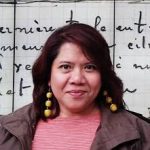
About Dorothy Guerrero
Dorothy Guerrero is Head of Policy and Advocacy at Global Justice Now, an organization that mobilizes people in the UK to act in solidarity with social justice groups in the Global South. Prior to Global Justice Now, she worked at the Transnational Institute, African Women Unite Against Destructive Resource Extraction, Focus on the Global South, Asienhaus, and the Institute for Popular Democracy in Manila, focusing on corporate accountability, climate justice, migration, and trade and investment. She holds an MA in Development Studies from the Institute of Social Studies in The Hague.
How Well Do 'Elites' Understand the Metacrisis?
How Well Do ‘Elites’ Understand the Metacrisis?
featured image | by Ingo Joseph, pexels.com
Excerpted with permission from a presentation given as part of Sterling College’s Surviving the Future: The Deeper Dive with Shaun Chamberlin. And with appreciation for Nate Hagen’s The Great Simplification podcast and animation series.
How well do “elites” understand the metacrisis?
I have lots of feelings on that. I think it’s a mixed bag. I think if you’re an elite, you have access to very good information usually. And I think almost all of the elites expect some event is coming this decade and they’re preparing for it. Anyone right of center probably doesn’t care about climate change or ocean temperatures or biodiversity as much as many of us, but they’re looking at geopolitics, they’re looking at central banks and things like that.
That said, I’ve talked to a lot politicians and wealthy people, and a lot of them do get it. They don’t voice it out in public – the military, the US and the elite billionaires and power brokers of the world – maybe there’s a thousand or two thousand of them. I think we’re really in trouble unless we can change the consciousness of that group because that group is going to continue to funnel more and more money into the super organism. They’re going to own their own AIs. There’s going to be a hundred AIs around the world that are uber powerful and just (not so metaphorically) eat the Earth.
And I’m all for building local resilience and having eco-Jedi all around the Earth and protecting other creatures and ecosystems and living more locally, but I think I do increasingly believe that there needs to be interventions and a change of consciousness and awareness.
And it is true. I don’t know how hard it would be actually, other than a lot of those people are dark triad personality disorders. But I actually think there’s no saving yourself. We’re going to have to save the whole. I mean, living in a bunker, what kind of life is that? So, I’m actually going to try to spend more time intervening with those groups. I’m going to Utah in a few weeks with a big group of those people. And I’m going to say that trying to save yourself in a bunker is the wrong strategy. We need to bend and not break our society. Otherwise, it would be bad. Kind of like crossing the streams in the Ghostbuster movie.
I think we are approaching a period where speaking truth to power is going to become more dangerous in our spheres in the United States. I mean already here in India, in Ecuador, in China, in other places, environmental activists get assassinated. And especially with AI, we’re not going to know what’s true and what’s not. And I feel strongly that we have to speak the truth as we know it. But I also feel like there’s going to be a left-leaning and a right-leaning authoritarian bent. So, talking this way is going to be increasingly more risky than it has been.
I’m in a town called Auroville in India, and Auroville was the OG of intentional communities. There’s 3,500 people here, and there’s locally grown restaurants and everyone bikes around. It’s not a utopia, but every morning you hear all the temples and people are singing and they get together and they chant, and then they cook, and it’s a really spiritual place. They do not use much energy at all. So it can be done.
I have a small staff and one of the things I’m doing here in India is strategizing on how we could help the world in the best way, given a two to seven year timeframe. And I think community is the best answer and not for the reasons that I had thought. When you say, ‘Oh, we need more community,’ it’s like, okay, we’re going to grow food together and have local systems and share and you can use my lawnmower. And I think all those things are good.
Being here, I’ve actually learned something quite different. In the morning at 6:00 AM we’re chanting. And I learned that these Indian chants were designed by ancient people of wisdom before the Hindu religion was even evolved to resonate in our bodies and create this feeling of wellbeing. And so, the community here, we cook together, we chant together, we have these conversations and my body feels healthy and so much better than the frenetic individualistic life that I have in the United States.
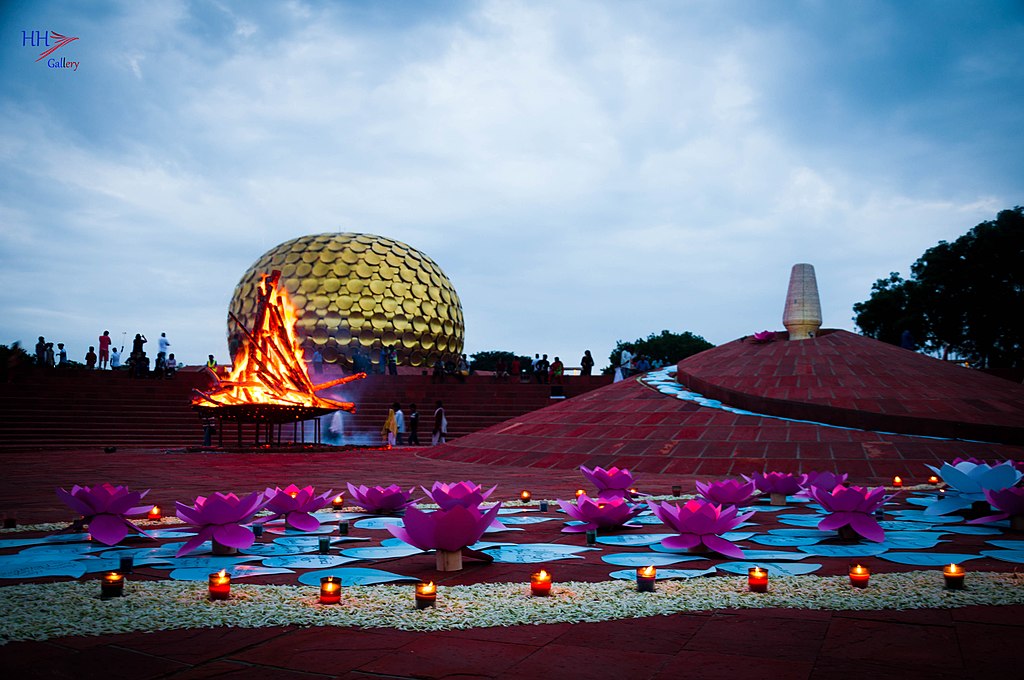
So to me, the importance of community is how it makes my physical being more aligned with my ancestors’ physical being – and then all the sharing, like the lawnmower. And I’ll help you, you help me. That’s all an added benefit. But I actually think building community like that is super important. I would like to maybe create some sort of a video series that could be viewed in Brighton UK or Topeka, Kansas or somewhere in China that people could get a rough hologram of what we face. But then there would be a way that they could converse and interact and develop community all around the world. Those people that are ahead of the curve on that can act as rocks in the river as the water starts rushing, they’re big enough, solid enough rocks that they don’t tumble down.
And so, somehow to build a Great Simplification community, decentralized around the world, that every community would have different answers and different contexts, but there would be kind of a scout team that has the real human predicament in their mind and is working on all these issues.
So, long story short, start having conversations in your community, especially with people that you might not normally agree with. Because ultimately most of us care about the same things. And at the margins we’re disagreeing about everything. But in our towns we agree on healthy food and safe schools for our kids and all those things. And the world is about to become much bigger again. So I think community is the thing that I would promote the most.
I ultimately think society is not going to change en masse ahead of what’s coming, and we’re going to need pilots – as individuals and as communities. Some will fail and some will be pretty good and some will be amazing that other people want to follow. And so, one of the reasons I’m here in India is, we truly are in this carbon trap. And because we’re social primates, we look to others for confirmation on what to do. And we need more people being comfortable not wearing fancy clothes and not taking trips and doing things locally and singing and growing food instead of having some speedboat they bought. And I think some of that is happening naturally because young people don’t have as much money and don’t need as much. But can you imagine if what we consider for status changes from real estate, shopping centers, and bling to kindness and ecosystem protection and local community?
The social discourse is what I worry the most about. For a quarter of the people, climate change is a socialist hoax and it’s ridiculous. “The earth has warmed and it will again”. And another quarter is like, “Oh my God, you’re so naive. It’s much worse than that. We’re all going to die by 2035”.
I think the carbon pulse has skewed our biological template towards being individualistic and competitive and that is not our destiny or our genome. I think a lot of the people who are CEOs and national politicians do have a preponderance of narcissism, Machiavellianism and psychopathy. And so it’s not a human behavior thing, it’s the way that our culture has trained our human behavior. I’m most interested in the levers and how we might be able to shift them or at least shift them in certain pockets around the world.
Coping
How do we cope with this story? And I think the first things we have to expand in our quiver of arrows are really basic human things like music and love and laughter and hanging out with your dogs and walking in nature. Collapse is a movie that we’re kind of compelled to watch, but don’t watch it all the time and make sure and live your life in the best way that humans can experience things. Another is that this is a sad story for me. I grieved long ago for the gap between what culture is telling us in the media and the movies and the politicians, and what the reality that I perceive is. And being sad for that loss is perfectly normal.
You should not feel any guilt or shame about feeling grief about this. If you felt unconcerned or unmoved or this was funny or something, then I would be worried. So feeling a little grief is appropriate and I think reflecting on that as an individual and also talking about it with another person or a group of people is really helpful. Talking about this stuff with another human being, even if you don’t come up with answers, reduces your cortisol, which is a stress hormone. It boosts your helper T cells, which boosts your immune system. So I encourage that. Also, keep perspective – we’re near the top of the carbon pulse. If I told you that you would be left alone on an ice flow and it was negative 20 degrees Fahrenheit and windy outside, you would think that’s a death sentence. But to an Inuit, that’s like another normal day.
I look at these people in India who have virtually nothing and sleep on the floor in these tiny little mats and eat rice and there’s bugs everywhere and they’re still smiling and laughing. We have to keep perspective of where we are. I’m pretty sure that things in the world are going to be worse than the average person expects, but I’m also pretty confident that they’re going to be better than a lot of us fear. So keeping perspective is important. Also keep in mind gratitude every day, be thankful for the amazing things that we have access to- not take it for granted – and really appreciate it.
One skill that I’ve learned over time is to compartmentalize different aspects of this. I’m focused on climate change and learning about what’s going on. I’m uber focused for six hours or four hours on that, but then I don’t dwell on it for the rest of the week because if I did, it would disrupt living my life and other things.
Another recommendation is to start being more comfortable carrying dissonance, carrying uncertainty. When the average human hears this story, they respond with polar extremes of “this guy’s an idiot – humans will find something we always have” or “man we’re screwed. It’s Mad Max, there’s nothing we can do.” And both of those extremes have one thing in common, which is that it obviates the need for any personal response or action. But the reality is, most likely the future will be in the middle. So we need to be more comfortable with uncertainty and navigate the pathway between fantasy and doom. There are two kinds of goals we can set. There’s conditional goals that depend on who’s president or how much money I make in my job. There’s also unconditional goals, which is something that only you have control over, like planting a garden or learning a skill. And when you accomplish an unconditional goal, you get very large psychic benefits from doing that.
Simplify
Simplify first and beat the rush. It’s a little bit hypocritical for me to include this when I have a 10 foot by 20 foot storage shed, which I pay $125 a month for the last seven years. And I haven’t gone through and jettisoned the items that were the ghost of dopamine past in my life. But I’m trying. And I think for many of us in the western world to have so many material things is not making us happy or healthy. Simplify and use less energy and resources – not to save the planet – but to be more personally flexible and resilient as future events come is good advice.
Forest bathing. There is the Japanese term, shirin-yoku, ‘absorbing the forest atmosphere’. Spending time in nature gives you huge physical and psychic benefits. And I do that in India and I do it back in Wisconsin as well.
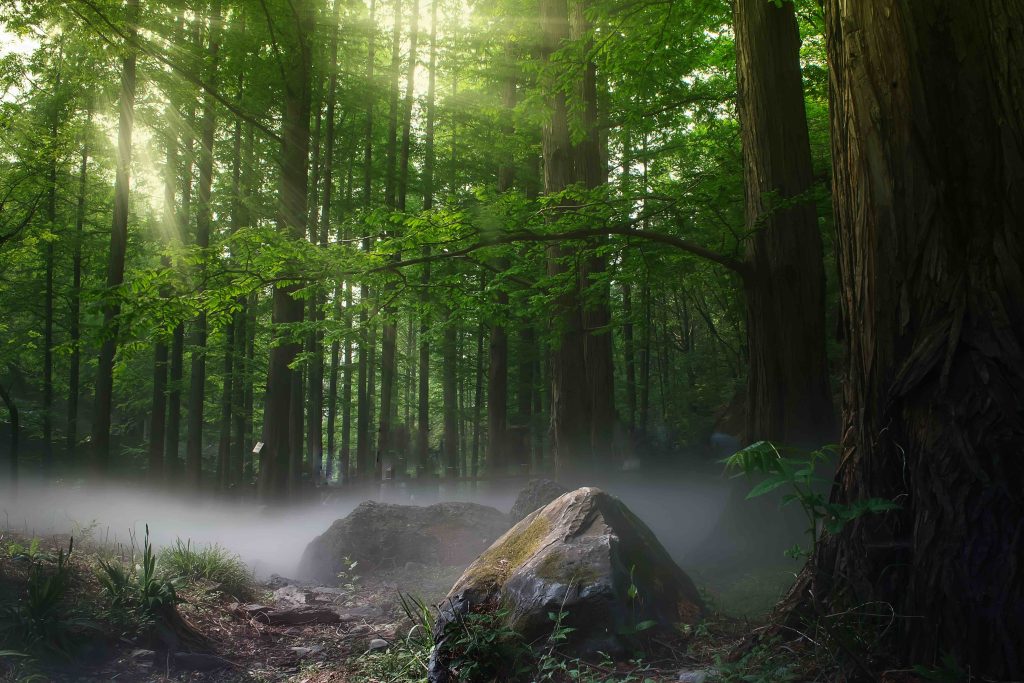
Purpose
A lot of people don’t have a feeling strongly of purpose. Just try In the next month or so, give yourself a 24-hour vacation from other people and your phone in a place you find meaningful and ask yourself, “who do I wish to be in this life and why do I have that wish and how might I make that real”? And the answers aren’t for anyone else but yourself. And you might be happy that you had that discussion with yourself. Try and avoid the consensus trance. We have so many confident and charismatic people saying “this is the answer, this is the way things are going to be”. Follow your own instinct.
Do research if you need to but be confident in your own inner judgment. An inner compass sharpens the sword over time. And the sword in this case is you.
Finally, some suggestions for engaging with the broader challenges of our world. Finding a tribe of like-minded humans is really, really potent. And you could find different tribes that have different objectives. One might be those that share your values and your ethics. Or you might find a group of people that you really love and cook together and listen to music together.
And I think if you’re confused or unclear of your direction, you don’t have to know everything now. Keep learning and assimilate the human predicament and just take a little step in a direction that feels right to you. I think we get a lot of advice and sometimes scolding, especially from the environmental movement, that we shouldn’t eat meat, we shouldn’t drive a car, we need to have solar panels. We should never fly. And all that is probably good personal hygiene for the times we’re alive. But I would instead encourage you all to maximize your impact instead of minimizing your impact. I would much rather have a larger impact on the world and our future than one 8-billionth of a smaller impact on my footprint.
We have many people in our society, architects and analysts and engineers that are planning the future. I actually think it’s backward. We’re going to need artists and poets and warriors and mystics to envision and move towards the future that we want and then get the architects and engineers involved to construct that. So don’t be afraid to be a warrior and a mystic in the spheres that you care about.
I’ll leave with this quote by Ilya Prigogine:
“When a system is far from equilibrium, small islands of coherence have the capacity to shift the entire system.”
Perhaps systems-aware, Surviving the Future students could be such islands of coherence. Thank you all. That’s all I have.
Return to Strength in Openness Contents Page
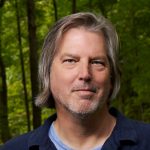
About Nate Hagens
Nate Hagens is the Director of The Institute for the Study of Energy & Our Future (ISEOF) an organization focused on educating and preparing society for the coming cultural transition. Allied with leading ecologists, energy experts, politicians and systems thinkers ISEOF assembles road-maps and off-ramps for how human societies can adapt to lower throughput lifestyles.
Nate holds a Masters Degree in Finance with Honors from the University of Chicago and a Ph.D. in Natural Resources from the University of Vermont. He teaches an Honors course, Reality 101, at the University of Minnesota.
Openness and Strength
Openness and Strength
featured image | Thomas from Pixabay
This Editorial precedes Volume 24, Issue 1 of Kosmos Journal. Scroll down to access featured content
Dear Kosmos Reader,
Welcome to the Year of the Wood Dragon, the start of a new 20-year cycle according to Feng Shui principles, dominated by the element – fire. Who knows for certain what the world will be like in 2044? Many are preparing for profound change. Yet, change is not dictated by outside forces alone, acting upon us. We too have the capacity to be agents of transformation. The Wood Dragon symbolizes this powerful potential energy, tempered by balance and inner growth. Imagine a sacred oak tree that grounds itself, rooted firmly and growing tall, reaching for the sky. This is the invitation of the Wood Dragon.
When we are grounded in reality and understanding, we can be more open to the winds of change, outer and inner. Openness is a quality we are able to cultivate when we release fear. That the coming year is dominated by the element of fire underscores the need for courage. In this edition of Kosmos, Judy Wicks speaks openly of her feelings for Gaza and the acts of courage she has witnessed there; Riane Eisler talks about transcending inherited narratives of domination; and Robert Cobbold reminds us about our left-brain bias as a species, the side of the brain associated with rigid thinking, and how this bias is inhibiting our action to protect and restore our planetary home.
In How Well Do ‘Elites’ Understand the Metacrisis? Nat Hagens warns, “we are approaching a period where speaking truth to power is going to become more dangerous.” He advocates for a spiritual intimacy that generates the energy of openness, harmony and love. Sole survival is not the answer. Soul survival is. How we treat ‘others’ through the coming storm mirrors the quality of our hearts.
From the recent Great Transition Initiative Forum “What’s Next for the Global Movement?”, we present a trio of essays. Jeremy Lent’s call for a new Eco-Civilization Framework embodies the openness to change so needed in these times:
It incorporates Indigenous concepts such as buen vivir and ubuntu, insights from ecological economics and commons theory, and principles from the permaculture, Transition Towns, degrowth, and agroecology movements. It reflects spiritual underpinnings of Deep Ecology, engaged Buddhism, and universalist Christian theology. It embraces ideas from the anti-globalization, eco-socialist, social justice, LGBTQ rights, and Rights of Nature movements, among others. Ultimately, it has the potential to catalyze globally dispersed “blessed unrest” into a coherent, benevolent force for societal transformation.
If it is true that 2024 marks the beginning of an end, let it be the cycle of domination and greed that finally loosens its hold. In preparing for the next cycle, may we open our hearts and minds to the inflowing energy of awareness and compassion, standing like oak trees in sacred togetherness, courageous and strong.
R.Fabian, for Kosmos


